The legendary Armored Personnel Carrier
Probably since ww2 and the Universal Carrier, no armored transport has been produced to the extent of the M113, and this remains a record until today at least for a tracked vehicle. Of both vehicles, the Universal carrier (also called "Bren Carrier") was even more prolific (113,000) but never approached the second in terms of versatility and overall performances. The M113 was a true modern "battle wagon", amphibious, NBC protected, and offering a full protection to its crew while the second was a light, cheap open-top tankette which left the crew largely unprotected. The M113 is no longer in use as an APC in the United States Forces and US Marines, but in specialized variants, now largely superseded by the M2/M3 Bradley IFVs.It is still in use however in perhaps 50 armies worldwide, and will probably be still around in the next twenty years, not always as an APC as one of the numerous variants and derivatives of the model, also built under license or copied. It should be noted that the absolute record is now held by the practical successor of the Jeep and classed now as a wheeled APC, the Humvee and its 280,000 vehicles built.
Such production levels, still, are unusual for a Western tracked Armoured Vehicle. It is due to a concept validated over time by the Food and Machinery Corporation, and which was good overall in its basic version to be adapted in a large variety of configurations. It was bloodied in dozens of conflicts due to its large availability, and named "The Green Dragon" by the Viet-Cong, during the Vietnam war, where it became as familiar and iconic as the Huey helicopter. However contrary to the opinion of some, it was never, neither officially or unofficially called "Gavin". GIs used to call it simply the "one-one-three", "track" or "ACAV" by generalization in Viet-Nâm. The Australian called it the "bucket" and "Bush taxi" and the Germans the "bathtub" or "elephant shoe", which the Greek nicknamed it the "Ducklings".
Development history
The recipe for its success lay paradoxically in the relatively failed previous products of the Food Machinery Corp (FMC). The M75 was heavy and expensive, which prevented amphibious capability or prevented air transportation while the second was the opposite, too lightly armored to protect the crew with efficiency and tradeoffs in production due to cost savings caused reliability issues. The third APC addressed all these issues in a single package, called the "Airborne Armored Multi-Purpose Vehicle Family" or AAM-PVF.It was already in project in the 1950s when the Kaiser Aluminum and Chemical Co. was approached to design a suitable hull, offering both weight-savings and protection. Two versions were engineered in 1959, the aluminum-skinned T113 and the steel T117. They were demonstrated to the US Army Ordnance and eventually the T113 was chosen and modified as the T113E1 in 1960. At the same time, the truncated nose was modified as a straight sloped front plate, which became its trademark. It was later standardized as the M113 the same year, mass-produced and pressed into service in 1961.
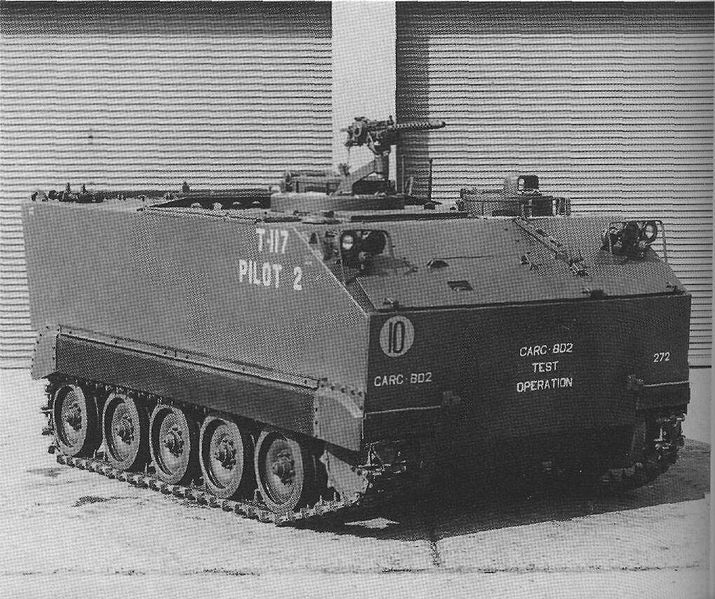 FMC T117 prototype
The M113A1 diesel was tried in 1964 and supplanted in production the Gasoline version of 1960. The series will be battle tested soon in Vietnam (1962) and widely used from 1964 to 1973, including the well-known ACAV variant. In 1979 a major upgrade came with the M113A2, which improved mobility and protection in several points. The M113A3 appeared in 1987, aimed at improving its general survivability.
FMC T117 prototype
The M113A1 diesel was tried in 1964 and supplanted in production the Gasoline version of 1960. The series will be battle tested soon in Vietnam (1962) and widely used from 1964 to 1973, including the well-known ACAV variant. In 1979 a major upgrade came with the M113A2, which improved mobility and protection in several points. The M113A3 appeared in 1987, aimed at improving its general survivability.
Design
Hull
The hull is built of 5083 aircraft-quality aluminum alloy, 0.47–1.50 in (12–38 millimeters) thick, giving the same strength as steel but at a slightly reduced weight. This weight-savings (40% of vehicle components are manufactured from these light alloys) without compromising protection. A solution that addressed the major heavy M75 issue, to be not air-transportable. This allows better amphibious performances as the vehicle could swim effectively. Indeed, the M113 weighted 12.3 tons compared to 18 on the M75, and the M59, 19. The frontal protection was capable in theory to defeat 20 mm autocannon AP rounds, and HMG hits all-around.The hull is fully enclosed and rear apertures sealed off by rubber lids, allowing also a full NBC protection to be applied (although this came later). All in all, it should be noted also the M113 was much smaller than the two earlier APCs (60-70 cm shorter, 60 cm lower), without sacrificing too much interior space, which was better rationalized. The engine compartment, transmission, and fuel tanks indeed only occupied 1/5 of the internal space. Seen from above cutaway view, the crew & cargo bay compartment occupied almost two third the vehicle.
Although the prototypes had a truncated nose which made them look rather stubby, the definitive one, for ease of production, more internal space and better protection, had a sloped nose from top to bottom, but a much reduced truncated lower part. The base configuration was straightforward, as there was no revolution compared to the previous APC in the internal arrangement: The driver was located to the left-hand side, and engine to the right-hand side, while the main compartment was at the rear, with two rear doors for access and exit. There were two banks for 11 equipped infantrymen in total. A cupola for the commander/gunner was located in the centerline, behind the driver and engine.
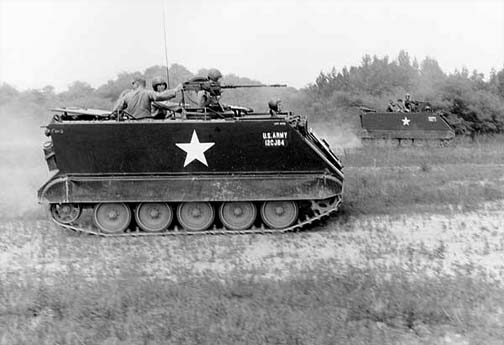
M113 early production in exercise at Fort Meade, 1965.
Performances
These significant weight savings allowed to use a relatively compact first batch Chrysler 75M petrol engine delivering 209 hp, coupled to a General Motors TX-200 manual gearbox. It was replaced by a Detroit 6V53 V6 two-stroke diesel engine of 318 cubic inches (5,210 cc) which developed 275 hp, coupled to an Allison TX-100-1 three-speed automatic transmission. Because of a favorable power-to-weight ratio of 22.36 hp per tonne, the M113 could reach 42 mph/68 kph on flat, slightly less than the M75 (43 mph/69 kph) but much better than the M59 at 32 mph (51 kph). The M113 was tested at the FMC testing grounds, and for the Army at the Aberdeen proving grounds, which it was shown capable of climbing Gradients up to 60%, side slopes of 30%, a vertical step of 23 in (0.6 m) and a trench 66 in (1.7 m) wide.Due to its buoyancy, the M113 could swim at 3.6 mph (5.8 km/h). As mentioned before, it could be air-transportable by heavy-duty carriers (like the C-5 galaxy, Globemaster and C17) as well as helicopters like the CH-53 Stallion, Chinook and Tarhe flying crane. This diesel engine was sober enough to provide sufficient autonomy for 483 to 500 km, on internal fuel alone. Jerrycans could be carried for extra range. All this power was passed to the ground through a five stamped, doubled and rubberized roadwheels drivetrain, no return rollers, and suspended by torsion bars. The rear idler and front drive sprockets were specific to the model, relatively small in size for better handling compared to previous models that re-used standard heavy standard components of tank chassis. There were single-pin tracks, with hard and soft steel parts and rubber shoes. The upper part could be protected by a rubber side skirt and the front and rear had mudguards.
Armament
The M113 is considered as an APC (Armoured Personnel Carrier) because its base armament is "light". In fact, the standard issue Browning cal.50 M2HB heavy machine gun nicknamed "Ma Deuce" was a quite capable weapon both in reach and impact, and could deal with infantry, buildings, low-flying aicraft and helicopters, as well as soft skin and lightly protected vehicles in general. This HMG was located on a turret ring in the centerline, manned by the commander, which doubled as a gunner. The latter was seated in a rotatable turret basket, in the middle and above the seated infantrymen, five per bank, facing each others. There was no pistol ports but a large hatch in the rear part of the roof, right behind the cupola.The armament variety is limited by the structural stiffness of the vehicle and stability, but the most common weapon (which made in an Infantry Fighting Vehicle or IFV) was the 20 mm autocannon, but a large range of guns up to 105 mm were developed for close infantry support and defense against other light armoured vehicles. In addition, a 40 mm Mk 19 automatic grenade launcher could be swapped instead of the standard cal.50 mount.
The M113 also could receive ATGMs (Anti Tank Guided Missiles) like the BGM-71 TOW or the lighter M47 Dragon which could also be swapped for the cal.50. This weapon system was indeed contemporary to the first M113A1, making it an early tank hunter, organic to infantry units. With such versatility, the vehicle was reputed also a reliable and sturdy, stable platform, and really became a cheap "jack-of-all-trades" with much-reduced maintenance costs due to standardization. See variant details notes.
Production & main variants
M113 (1961)
The base version (1961). Much similar to the following versions in appearance, it was propelled by a 209 hp (156 kW) Chrysler 75M V8 gasoline engine. Among other things, this version was designed to swim without deploying flotation screens, only deploying their front trim vane and propelled and changed direction by using their tracks. This version was further tested in Viet-Nâm and the reports helped to create the modified M113A1.M113 ACAV (1963)
This version was developed during the Viet-Nâm war, much in response to casualties observed with the exposed gunner/commander, and losses observed at the ambush of Ap Bac (January 2, 1963). ACAV meant "Armored Cavalry Assault Vehicle". This was at first an improvised field modification by the South Vietnamese Army (ARVN) in 1963, later generalized to the American M113s in service. In priority, the commander and cargo hatch positions were better protected. The former in particular received a set of armor shield protection surrounding the gunner. Quite rapidly the early soft and scrap metal used by the ARVN was replaced by hard steel for better protection when the type was standardized. Gun shields were created in Okinawa for the cal.50 in the center and the rear aft and starboard M60 gun positions manned by the crew. In 1965, the ACAV kits were standardized and mass-produced in the US and ended with a fully circular turret armor for the commander/gunner. In some cases, the rear M60 mounts were replaced by an M106 mortar carrier. Apart from the 11th Armored Cavalry Regiment which trained in the USA with its ACAV kits, most were installed in the field. Also, an add-on armor was frequently added under the belly for better mine protection.M113A1 (1964)
The biggest change was the use of a much sober 6V-53 Detroit Diesel engine which was also more powerful and gave it a much-extended range and reduced the fire hazard issue to the much higher ignition point of the diesel. The "A1" was also used on all variants equipped with the diesel engine in general. Other modifications were minor.M113A2 (1979)
After the Viet-Nâm war, reports helped to improve the model rather than design a new one (although a proper IFV, the future Bradley program was initiated). This led to the A2, which encompass a whole range of modifications, including better engine cooling by swapping the position of the fan and radiator, higher-strength torsion bars for a higher ground clearance, fitted in addition with shock absorbers for smoother rides. For extended range, armored fuel tanks were fitted externally on both sides of the rear ramp (a significant recognition element). This also helped to free 16 cubic feet of internal space for other uses. The M113A2 overall weight, however, rose to 25,880 lbs (117 kgs) more which possibly altered a bit its amphibious characteristics, but it was still capable of swimming well. A 2x2 Smoke grenade launcher was added in complement to the usual cal.50 for self-concealment. Many earlier vehicles and versions were also upgraded to this standard.M113A3 (1987)
Although the M113 showed its age by the end of the 1980s it was still irreplaceable, a program was launched to extend its service life for the next twenty years, called "enhanced (battlefield) survival" or RISE. A yoke for steering replaced the old of laterals and a more powerful 6V-53T Detroit Diesel replaced the older powerplant (which helped reclaimed the performances losses after the introduction of the heavier A2), extra external fuel tanks were added whereas internal spall liners were fitted for better crew and infantry protection.The A3 also became an upgrade for older vehicles therefore production figures are ellusive. This was the last upgrade of the M113, still in service with some units of the US Army and Marines. Large parts of the stocks were also sold abroad with the end of the cold war, scrapped, or sunk as artificial reefs. Many M113 replaced the ageing M551 visually modified (vismod) simulating Russian-made T-80 or BMPs at the U.S. Army's National Training Center in Fort Irwin, California. These have in addition the advantage of still allowing an infantry squad to be carried in the simulated BMP-2 contrary to the M551s.
Upgrades
Since the early Vietnam War era ACAV kits has been used in many occasions, the latest of whaich was Iraq for standard M113s in service by the time of Operation Desert Shield (1991). The caliber .50 gun shields were modified and the rear port and starboard gun stations deleted. Most served for convoy escort duties and urban combat. Early on, the relatively weak armour was augmented by add-on steel plates (IDF started this out).Reactive armor and slat armor were also added for efective protection against RPGs, especially useful in the 2003-2013 war in Iraq and Afghanistan. Windowed gunshields were also developed by a local armorer in Iraq which recalls the M1A2 Abrams's TUSK set. Discreet rubber band tracks are used by Canada and others for stealth night operations but like the RISE package, helped to decrease road damage, while allowing for higher speed, better grip and mobility, and easier maintenance by much reducing the level of vibrations.
M113A4 or MTVL (1994)
Also called the M113A3+ this post-cold-war project was an attempt to modernize the APC basic design in several directions. Also called the "mobile tactical vehicle light" (MTVL) it saw a chassis lengthened 34 inches with an additional road wheel and built by private venture as a "production-tooled demonstrator" by the United Defense group. The US Army wasnt interested but it was copied by Pakistan, Turkey, Egypt as it just needed a sight retooling of their local M113 manufacturing plants. Canada and Australia, also used stretched-out M113 versions: In total Canada ordered 183 vehicles to be converted to this new standard. These vehicles are also equipped with the compact Cadillac-Gage one-man power assisted 12.7 mm (.50 cal) turret.Other modifications includes increased power and improved suspensions, not much increased ground pressure despite a 4 tons more in weight gain. Optional bolt-on steel armour could be added. The armament comprised also two C6 7.62 mm light machine-gun (LMG) and two banks of four electrically fired 76 mm multi-purpose grenade launchers (smoke, white phosphorus, frag rounds). Another variant uses the Protected Weapon System [PWS] instead of the turret, a remotely- controlled weapon station with a 7.62 mm C6 LMG.
In addition a digital night observation sight is given to the driver and a light intensification sight for the commander. The "M113A4" (standard chassis) is also produced by FNSS of Turkey in 11 versions, all modernized. In another register, the M113 is also used by NASA (for emergency evacuation of astronauts during a launch pad emergency), and some police SWAT units.
American M113 variants
The M113 as it was stated above, showed an extraordinary capability for transformation. More than a hundred variants and sub-variants are known internationally, and there will be all covered here. Some only concerned a few vehicles while others contributed to produce an all-new mass-produced specialized vehicle all by itself. Some of these at least in the USA, like often with specialized vehicle, are still in service today whereas the APC variant is no more.M58 Wolf
A specialized vehicle equipped for laying a smoke screen, with internal tanks and a generator. Much of the cargo area is occupied by this system.M48 Chapparral SPAAML
Anti-aircraft (missile) variant with the rear section entirely modified to carry a launcher for four MIM-72A/M48 Chaparral missiles and reloads inside.M106 Mortar Carrier
The standard mortar-carrier version. The M30 mortar is mounted on a turntable in the rear cargo bay, open by a three-part circular hatch. The mortar also had the capability to be loaded off and fired dismounted. The US Army uses now the M1064A3, (upgrade to the A3 standard) which uses a M121 120 mm mortar. The M106 led to a sub-variant, the M125, similar but armed with a lighter M29 81 mm mortar (and carrying more ammo). The XM106 Self-propelled Mortar was originally known as the T257E1 before standardization. The M106A1 had the diesel engine, while the M106A2 was to the A2 standard.M132 flamethrower
The flamethrower variant, equipped with the latter in a turret and carrying an M10-8 flamethrower and coaxial M73 machine gun, fuel and pressure tanks in the rear of hull. They have been partly upgraded to the A1 standard (M132A1). They served in Vietnam.M150 TOW Tank Hunter
Tank hunter (ATGM) variant equipped with a single TOW missile launcher installed right before the rear crew hatch, with a set of missiles in reserve inside. Secondary armament is still the cal.50 at the usual position. Also used by several countries or developed as a kit. A sub-variant was later developed with two TOW missiles.M163 SPAAG
SPAAG version (Self propelled Anti-Aircraft, Gun), armed with a 20 mm M61 Vulcan autocannon in turret installed on a M168 mount, on a M741 carrier. This Vulcan Air Defense System (VADS) had rapid fire capabilities, and is very accurate up to a 2 miles range. Like all SPAAGs it could also be used against land targets with deadly efficiency.M548 Cargo
The unarmored cargo carrier equipped with a modified heavy duty rear cargo bed.M577 Command
Command & control vehicle, with a completely modified after section, housing new surveillance equipments, operators, a map table, additional long-range radios and a generator. A recent sub-variant is the M1068 Standard Integrated Command Post System Carrier (SIPSC), equipped with the latest US Army automated command and control systems. It was used as a tactical operations center (TOC) with a rear hull compartment raised to 74.75 in (189.9 cm). The commander's hatch was simplified and a deployable tent was carried to provide extra work space on the field. Th latter comprised map boards, folding tables, radio, computer terminals for a comprehensive C&C suite. Includes also an additional fuel tank in the right rear of the compartment, hand-cranked extendible long range antenna and 4.2 kW APU which can be dismounted and sandbagged to avoid excess noise.M579 Fitter CEV
A Combat Engineering version, with a fitter and repair equipments, like a crane. Although never accepted in US Army service, it was largely exported.M806 ARV
Repair and recovery vehicle equipped with an internal winch, two earth anchors mounted on the rear hull.M113 MBT (Vismod)
This Vismod ("Visual Modification") version is disguised as a Bradley IFV, equipped with a fake turret with false ERA blocks, MILES gear, MGSS/TWGSS system, which is used for training. Also called M113 OSV (OPFOR Surrogate Vehicle or "OSV") in force-on-force training.Other variants
- M113 AMEV (Armored Medical Evacuation Vehicle) armored ambulance
- M125 Mortar carrier (similar to M106 but with 81 mm M29 mortar).
- M474 Carrier for the Pershing I nuclear missile. Also called M113 TEL (Transporter erector launcher), Programmer Test Station and Power Station carrier and Radio Terminal Set carrier.
- XM546 Guided missile carrier/launcher MIM-46 Mauler SAM.
- XM548/M548 six-ton cargo carrier.
- XM548E1 carrier/launcher of the MIM-72 Chaparral SAM M54, later Redesignated XM730.
- M667 MGM-52 Shillelagh ATGM carrier.
- M688 transport and loader vehicle for the latter, based on the M548.
- XM696 ARV (Recovery vehicle based on the M548).
- M727 carrier/launcher for the MIM-23 Hawk SAM.
- M730/A1/A2 (RISE) carrier/launcher for the MIM-72 Chaparral SAM of the M54 system.
- XM741/M741 supply Carrier vehicle for the M163 VADS SPAAG.
- M752 identical to the M667 but for the MGM 51 Shillelagh.
- XM806/XM806E1 ARV (Armored recovery vehicle) with internal winch.
- M901/A1/A2/A3 Improved TOW Vehicle (ITV) with dual M220A1 TOW launcher and TOW2 M220A2 (A1).
- M981 FISTV (Fire Support Team Vehicle) Artillery forward observer vehicle (retired).
- M1015 Tracked Electronic Warfare Carrier.
- M1059/A3 Lynx Smoke Generator Carrier (SGC).
- M1064 mortar carrier with M121 120 mm mortar.
- M1068 Standard Integrated Command Post System Carrier (Modified M577).
- XM1108 Universal Carrier.
- M113-1/2 Command and Reconnaissance (Lynx). Based on M113A1 but four roadwheels pre side, rear engine, employed by the Netherlands and Canada
Prototypes
- XM45/E1: M548 based servicing and refueling vehicle for the M132.
- XM546E1 Lengthened chassis XM546 with six road-wheels.
- XM734 Mechanized Infantry Combat Vehicle (MICV) prototype.
- T249 Vigilante 37 mm SPAAG.
Foreign users and variants
Australia (around 700 in service now)
The Australian Forces were among the first users of the M113A1, rapidly bringing them into action in Vietnam in the early 1960s. Modernization and improvement packages were quickly applied to the series, like the addition of a AN/VIC-1 com set, large dust filters, removal of crew compartment heaters, 600 kgs of belly armour added for mine protection, and heavy steel tracks. Also, most turned out as heavily armed APCs, with the addition of the Cadillac-Gage T-50 turret (cal.50 +cal.30 or twin .30), or heavier turrets in the case of the following variants:M113A1 FSV
This variant was a practical IFV. FSV stands for Fire Support Vehicle. These were vehicles modified to receive the Alvis Saladin turret, armed with a short barrel 76 mm. it was used in the early 1970s by the Royal Australian Armoured Corps which named it the "Beast".M113A1 LRV/APC
This light reconnaissance APC was equipped with the V150 Cadillac-Gage T-50 turret always with the cal.50/cal.30 configuration. They were used by the recon units of both Cavalry regiments and Armoured regiments. They usually carried a crew of 3 (commander, driver, operator/observer) but usually carried additional stores and ammunitions rather than troops. They were used in Vietnam, some equipped at the beginning with the Model 74C Cupola/Command Station.M113A1 MRV
MRV stands for Medium Reconnaissance Vehicle. These were pretty much similar to the FSV but equipped with a more capable Alvis Scorpion turret. The great difference was the use of its image Intensifier night sight. Amphibious characteristics were enhanced by the fitting of a light sheet metal foam filled trim vane and side pods for extra buoyancy. The drivers hatch was also changed for safety. These were affected generally to Cavalry medium reconnaissance regiments. Now only part of the fleet is still in operational order while most were in the late 1980s. Many were converted as utility variants like the M113 Fitter ARV fitted with a HIAB roof crane, but also the modernized M113AS3 and the six-wheeled M113AS4 armed with a Tenix Defence HMG turret.Belgium
Belgium replaced its former M75 and M59s by a new M113 locally-built M113A1-B from 1982 on. Sub-variants were the basic M113A1-B-ATK, M113A1-B-Amb (ambulance), M113A1-B-CP/M113A1-B-TACP (Command Post), M113A1-B-ENG CEV (Combat Engineering), M113A1-B-TRG (driver trainer), M113A1-B-MIL Milan tank hunter, M113A1-B-Mor 120 mm mortar carriers, M113A1-B-MT/MTC maintenance vehicles, M113A1-B-Rec (ARV wih internal winch), M113A1-B-SCB battlefield surveillance vehicle, M113A1-B-VW forward artillery observer vehicle. Initially Belgium operated 500 vehicles, now all replaced by the Pandur.Canada
Canada adopted the A1, and later A2 and A3 and some were modified and derived in the 1980s and later. Canada had 289 vehicles in service now out of 1,143 purchased from the mid-1960s. Among these variants are the MTVE (Mobile Tactical Vehicle Engineer) CEV (plough blade+ rear auger, hydraulic hoses), the MTVR (Mobile Tactical Vehicle Recovery) ARV with 20 tons wich and crane, the M577A3 Command Post ("Queen Mary"), TLAV (Tracked Light Armoured Vehicle) - Cadillac turret or RWS. These are still in service contrary to the M113A2 TUA (TOW Under Armour) tank hunter, M113A2 EVSEV (CEV), M113A2 Mk.1 DAREOD (Damaged Airfield Reconnaissance Explosive Ordnance Disposal), MRT/IS MRT, ROFCS. In more recent times, the ADATS Carrier (1988), an air-defence variant was operated within the coalition forces in 1991 gulf war. It was based on the A2 and featured 8 ADATS missile launchers and turret with a X-band radar for tracking. In addition 341 M113A2s were modified under the Armoured Personnel Carrier Life Extension (APCLE) program, 183 of these in the 6-wheeled stretched version. Both have in common a set of upgrades consisting of a 400HP Allison diesel engine, upgraded suspension, bolt-on steel armour plates, steel cage armour, and Cadillac-Gage turret/Nanuk Remote Controlled Weapon Station. These were used in Iraq and Afghanistan until 2013. Some reformed vehicles were converted for civilian uses as tracked log skidders.Denmark
50 Danish M113A2 Mk I DK were modified and rebuilt between 1989 to 1993 by E. Falck Schmidt in Odense. Armed with a 25 mm Oerlikon-Contraves autocannon and coaxial 7.62 mm MG03 LMG mounted in an Italian Oto Melara turret and thermal sight. During IFOR/SFOR operation in former Yugoslavia, some received extra add-on armour and spall liner. These were deactivated or reconverted in civilian use in 2009.Germany
West Germany received hundreds of M113G and M113A1GE later standardized as the A2G which replaced older models and were declined into multiple local variants. The M113A2 EFT GE A0 received an improved SEM-80/90 radio set. and under a modernization program, the MTU engine, new steering and brake systems. The G vehicles receive a bank of eight 76 mm smoke grenade launchers and Rheinmetall MG3s LMGs. The standard APC was known as the Mannschaftstransportwagen. Variants included the Fahrschulpanzer (Driver trainer), FlgLtPz forward air controllers (FAC), RiFuMuxPz Direction finding station, SchrFuTrpPz VHF-HF Signals vehicle, TrFzRechnVbuArt Artillery computer vehicle, FüFlSt Fire direction center for artillery units, BeobPzArt Artillery forward observer vehicle, FltPzArt Artillery fire direction vehicle, FltPzMrs Fire direction vehicle for mortar units, FüFuPz Signals and command vehicle, KrKw Ambulance, PzMrs Mortar carrier, TrFz ABRA DR-PC 1a RATAC radar vehicle, TrFz Green Archer artillery location radar, and Waran 6-wheeled APC variant. Most of the above are now replaced or discharged.Egypt
Egypt receive M113 in the 1980s and locally produced improved copies known as the SIFV equipped with an upgraded armour kit, designed to resist 23 mm AP rounds and the 25 mm KBA-B02 turret.Israel
IDF was a prolific user of the M113 since the early 1980s. Its fleet was numbered as high as 6000+ vehicles in the 1990s, of the A1/A2 and A3 types. Many have been already upgraded or converted for special duties. It remains by far the most common vehicle in use by the IDF, pioneering early urban warfare modifications in Lebanon. The M113 was commonly referred to as Nagmash. Among variants are the Zelda APC with the distinctive Toga armor suite of perforated steel plates mounted on a frame covering the front and sides of the vehicle. The Nagmash pikud is a command APC. The Zelda 2 received ERA plus armored shields around hatches (1990s) but was judged too heavy for service.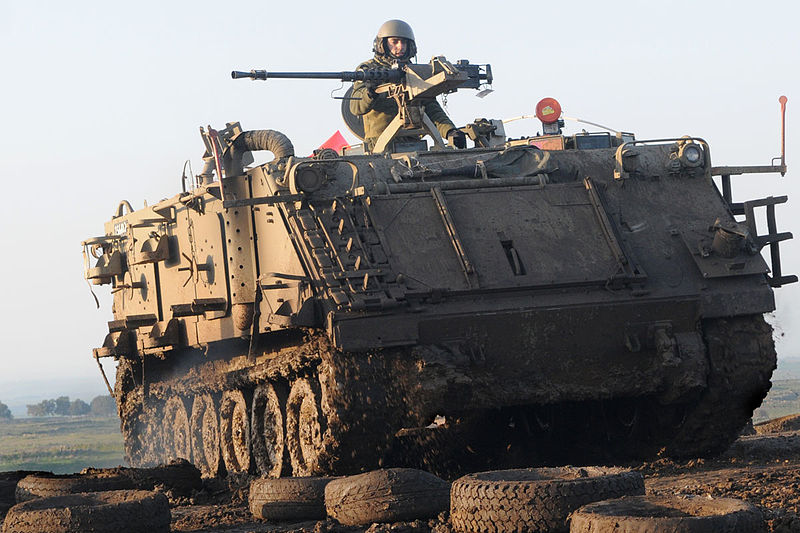 Artillery Corp M113 Zelda in training, Cadets Competence Day.
The Nagmash has the Toga suite plus a protective "aquarium" around the commander's hatch and hatches shields. The Kasman is a dedicated urban warfare/counterinsurgency vehicle with Toga suite and a massive superstructure around hatches. The Kasman Magen/Meshupar receive a modified superstructure and external fuel tanks. The Giraf is a TOW tank hunter while the Hovet is the equivalent of the M163 VADS (20 mm M61 Vulcan SPAAG), later upgraded as the Machbet with 4-tubes FIM-92 Stinger. The Hatap is the field repair and support vehicle. The Mugaf is the local M577 command post, the Keshet a 120 mm mortar carrier, the Alfa is the M548 cargo carrier, the Shilem a mobile EL-M-2310 artillery radar, the M113 AMEV an ambulance, and the IMI/Urban Fighter a modification including upgraded "Iron Wall" armor.
Artillery Corp M113 Zelda in training, Cadets Competence Day.
The Nagmash has the Toga suite plus a protective "aquarium" around the commander's hatch and hatches shields. The Kasman is a dedicated urban warfare/counterinsurgency vehicle with Toga suite and a massive superstructure around hatches. The Kasman Magen/Meshupar receive a modified superstructure and external fuel tanks. The Giraf is a TOW tank hunter while the Hovet is the equivalent of the M163 VADS (20 mm M61 Vulcan SPAAG), later upgraded as the Machbet with 4-tubes FIM-92 Stinger. The Hatap is the field repair and support vehicle. The Mugaf is the local M577 command post, the Keshet a 120 mm mortar carrier, the Alfa is the M548 cargo carrier, the Shilem a mobile EL-M-2310 artillery radar, the M113 AMEV an ambulance, and the IMI/Urban Fighter a modification including upgraded "Iron Wall" armor.
Italy (3000+)
The M113 became also Italy's main APC, with modifications such as the Arisgator, built by Aris, a full Amphibious version resembling the LVTP-7. The VCC-1 based on the A1 is an improved APC with rear and side sloped armor, firing ports, Browning M2 shields and smoke-grenade launchers. About 6-800 were produced, replaced by the upgraded VCC-2 without rear sloped armor and carrying 11 crew (1100-1300 produced), the VTC-9 (M113 CESV) and the SIDAM 25 SPAAG for AA purposes.Lebanon (1300+)
Lebanon's regular forces, South Lebanon Army, Kataeb Regulatory Forces, Progressive Socialist Party (Druze), Marada Brigade, Army of Free Lebanon, Lebanese Arab Army, the Amal Movement, the Hezbollah and Christian Militias were armed with (captured sometimes) M113s of various versions and some were rearmed locally with tailor-built turrets armed with ZU-23 and ZPU-4 quad mounts as SPAAG/IFVs.Norway (around 900)
The M113A2s were in service by numbers in the 1980s most as the NM209 (Panservogn, personnel), and declined as the NM135 (Stormpanservogn) A1 equipped with a local 20mm Rheinmetall MK2020 autocannon, 7.62mm coaxial LMG in turret. The NM135/142/196/198/200/201/202/205F1/F3 were all additional spall-liners versions of the APC or specific variants, the NM142 (Rakettpanserjager) was the tank hunter with Kvaerner Eureka Armoured Launching Turret and TOW-2 and coaxial LMG. The NM194/195 (Ildlederpanservogn, luftvern) is an air-defense command vehicle, the NM196 (Hjelpeplasspanservogn) an ambulance/medivac variant of the M577A2 and modified NM196F3 and NM198 (command variant). The NM197 (Replagspanservogn) is a maintenance vehicle, the NM199 (Transportpanservogn) a modified M548A1, the NM200 (Ambulansepanservogn) is the regular Ambulance version, others like the NM200F3 have an upgraded driveline, caterpillar engine, add-on armor and redesigned interior. Other versions comprised the NM201 (VINTAQS artillery forward observer), the NM202 regular Command variant, NM203 and NM204 are the local M125A2 mortar carriers, the NM205 is the regular CEV, and the NM216 a Signals vehicle.Philippines
The M113A1 was adopted very soon, from 1967 onwards. It was declined into at least 5 variants including the M113A1 Fire Support Vehicle (FSV) FV101 Scorpion turret variant, M113A1 Mortar Carrier, M113A2 (EDA) from US stocks from 2012 onwards some with Elbit Systems upgrades, the M113A2 FSV (Scorpion turret) and some reequipped with the Elbit remote controlled 25 mm cannon or RCWS 12.7mm machine gun. Four are converted as M113A2 ARV.Portugal
Operates since the 1970s 150 A1/A2s and variants including 107 mm mortar carriers, M730/M48A3 (Chaparral) SAMs, M901 ITV (M901/TOW) tank destroyers, M577A2 M/85 ambulance, M577A2 (M577) command and communications variants, M577A2 M/81 ACP command vehicles. Around 180 A1/A2 APC, 4 M901 ITV, 30 M48A3 Chaparral, 47 M577A2 (36 in service as command vehicles and 3 ambulances).Singapore
Known to operate regular and M113A2 Ultra IFV variant (M113A1 upgraded to A2 with ST Kinetics cupola twin remote controlled 40mm AGL/0.5-inch HMG or Rafael OWS M242 Bushmaster 25 mm autocannons and improved armor, the M113A2 Ultra Mechanised Igla (SAMs) for short range (SHORAD) and completed by the IFU variant equipped with an advanced fire control radar in the Singapore Air Force.South Vietnam
Improvised M113 w/M8 turret conversion, rearmed with M8 Greyhound armored cars turrets before the defeat of the ARVN in 1973.Switzerland (400 vehicles)
Outside the regular M113A1 obtained (Schützenpanzer 63), developed locally modified versions such as the Schützenpanzer 63/73 (A2 front float panel) and Swedish Hagglunds Oerlikon 20 mm Kan 48/73 turret, Schützenpanzer 63/89 (ddon passive armor, 76mm smoke grenade launchers, RISE), Kommando Schützenpanzer 63 and 63/89 (Command vehicles), Kranpanzer 63 (M579), Feuerleitpanzer 63 (Artillery fire control center command vehicle) and improved Feuerleitpanzer 63/98 (INTAFF), Geniepanzer 63 CEV/dozer, Minenwerferpanzer 64 and upgraded Minenwerferpanzer 64/91 mortar carriers, Minenräumpanzer 63/00 (Mineclearing vehicle) and Übermittlungspanzer 63 Signals vehicle.Taiwan
The Republic of China Army operated 675 M113A1s and also built its own local variant, known as the CM-21 with different engines and transmissions and produced from 1982 to 2009 (over 1000), declined into the CM-22/23 Mortar carriers, CM-24/A1 Ammo carrier, CM-25 TOW launcher, CM-26 Command, and CM-27/A1 Artillery Tractor.United Kingdom
Since the UK had developed its own APCs, only the RAF base-protection Tracked Rapier (quad SAM launcher) used the M113A1 chassis as a basis.Other operators
The list includes Afghanistan (173), Albania (130), Argentina (500), Bahrain (239 est.), Bangladesh (10), Bolivia (50), Bosnia-Herzegovina (80), Brazil (584 Army +29 Marines), Cambodia (210, now 20) Chile (427), Colombia (120), Democratic Republic of the Congo (12), Denmark (632 PMV), Ecuador (20), Egypt (2,950), El Salvador (20), Ethiopia (110), Germany (east-German -ex-captured ARVN, West-German 4,000 units, deactivated since 2010), Greece (2,500), Iran (200), Iraq (173+ 440 refurbished A2s & 1,026 M113A2s bought June 2013), Indonesia (2), Israel (6,131), Italy (3,000+), Jordan (1300), Kuwait (80), Lithuania (210), Morocco (1,200), Republic of Macedonia (30), Netherlands (60), New Zealand (120, now replaced with NZLAV-111), Norway (900), Pakistan (1,600), Peru (130), Philippines(120 A1, 114 A2), Poland (35), Saudi Arabia (3,000), Singapore (1,200), Spain (860), Republic of China/Taiwan (675), South Korea (400), Thailand (385), Tunisia (140A1-334A2), Turkey (3,000+), United Nations (6), United States (6,000), Uruguay (24), Vietnam (750), Yemen (670). France only operated civilian versions for mountain firefighters and Sweden evaluated one M113. The United Kingdom only operated for the RAF the well-modifiedUsers and battle records
The M113, because of its extremely long service lifespan and very large production plus massive exports worldwide, saw an impressive number of conflicts and wars throughout the century and beyond, perhaps only matched by the T-54/55. Since even the US did not consider to retire its modernized A3s and variants until 2030, let's guess that it will be in service for much longer in many other countries, including in those producing enhanced copies as these lines are written. That would not be surprising to find direct evolution of the M113 still running around in forty years from now.The M113 in Viet-Nâm (1963-72)
For the United States, the Vietnam war saw the opportunity to test new warfare concepts, like heliborne warfare and true mechanized infantry operations, which used the M113 Armored Personnel Carrier as their main "battle taxi". In addition, Armored Cavalry squadrons in Vietnam also largely consisted of M113s, replacing the ill-fated M114. Armoured battalions also used M113s organic with their headquarters companies, in each section (maintenance, medical, recovery, mortar, reconnaissance). U.S. Army mechanized infantry units consisted of one headquarters company, three line companies (around 900 men). The first operational deployment of the M113 came right with the beginning of the implication of US instructors with the ARVN in 1965, and n all ten mechanized infantry battalions and one mechanized brigade were deployed until 1972. The first to arrive was the Company D, 16th Armor (D/16th) 173rd Airborne independent brigade which consisted of three platoons of M113s and a platoon of SPATS (Self Propelled Anti-Tank Systems), reinforced by a fourth line platoon prior to its deployment for close indirect support, equipped M106 4.2 in mortar carriers. Towards the end of its deployment, the SPAT platoon was re-equipped with regular M113s (late 1966) and the mortar platoon deactivated in early 1967. At the same time unit was re-equipped with the new M113A1. Late 1968, these were standardized with three machine guns per vehicle (The regular cal.50 + two side mounted M60 machine guns). The D/16thy conducted search and destroy missions but also security around firebase perimeters and road patrols. Its largest engagement took place on 4 March 1968 at Tuy Hoa (North), attacked by an estimated 2 enemy battalions (85th Main Force (VC) and the 95th NVA Regiment). Captain Robert Helmick (Company Commander), was awarded the DSC, and other awards were earned by privates for valor. The same year the unit was deactivated and the vehicle restored and distributed to E Company, 17th Cavalry, 173rd Airborne Brigade (F/17th).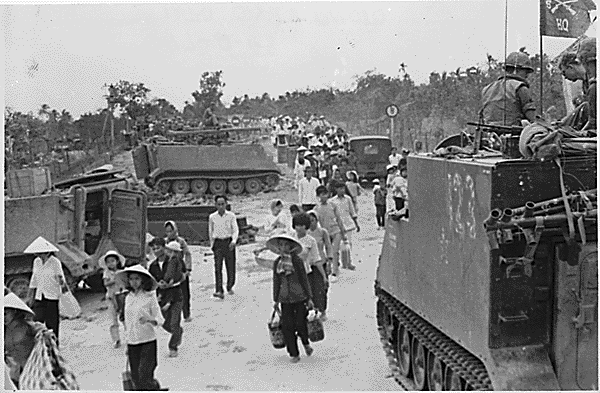 M113s and M577 at My Tho, Vietnam, Têt Offensive, 1968
ACAVs were seen in action massively for the first time with US Forces of the 3rd Squadron, 11th Armored Cavalry during Operation Cedar Falls. They used the herringbone formation that gave the vehicles optimal all-around firepower in case of jungle ambushes. In general, M113s were used in Vietnam to conduct Reconnaissance In Force (RIFs) missions as well as the famous Search and Destroy operations, as well as large incursions beyond the border, like in Cambodia (1 May 1970) and Laos (Lam Son 719 in 1971) against the Ho Chi Minh Trail.
These vehicles became the primary workhorse for all units involved and a familiar sight of the conflict, on par with the Huey helicopter. When part of armored units, they were seen as part of units comprising also M48 Patton and M551 Sheridan tanks or with modified gun trucks and V-100 armored cars for convoy escort missions. The USAF also used M113/M113A1 ACAV for its Security Police Squadrons for advanced air base defense.
The ARVN (Souh Vietnamese Forces) was the first non-American army to operate the M113. These forces rapidly found the commander too vulnerable and improvised shield protections later adopted by US Forces and standardized as the ACAV. The most notable unit was the 3d Armored Cavalry Squadron which earned the Presidential Unit Citation. The Cambodian Khmer National Armed Forces were also equipped with these vehicles, fitted with a turret and recoilless M40 105 mm gun. Eventually, the Australian Army deployed in 1970 received M113s and quickly devised their own variant of the ACAV before make a standard of the Cadillac-Cage T-50 turret cal.30 + cal.50 or twin cal.30. Some even mounted a Saladin armored car turret (short barrel 76 mm gun) called the or FSV (infantry fire support). The latter was replaced by the MRV (medium reconnaissance vehicle) fitted with a Scorpion turret which had, in addition, an improved fire control and passive night vision.
M113s and M577 at My Tho, Vietnam, Têt Offensive, 1968
ACAVs were seen in action massively for the first time with US Forces of the 3rd Squadron, 11th Armored Cavalry during Operation Cedar Falls. They used the herringbone formation that gave the vehicles optimal all-around firepower in case of jungle ambushes. In general, M113s were used in Vietnam to conduct Reconnaissance In Force (RIFs) missions as well as the famous Search and Destroy operations, as well as large incursions beyond the border, like in Cambodia (1 May 1970) and Laos (Lam Son 719 in 1971) against the Ho Chi Minh Trail.
These vehicles became the primary workhorse for all units involved and a familiar sight of the conflict, on par with the Huey helicopter. When part of armored units, they were seen as part of units comprising also M48 Patton and M551 Sheridan tanks or with modified gun trucks and V-100 armored cars for convoy escort missions. The USAF also used M113/M113A1 ACAV for its Security Police Squadrons for advanced air base defense.
The ARVN (Souh Vietnamese Forces) was the first non-American army to operate the M113. These forces rapidly found the commander too vulnerable and improvised shield protections later adopted by US Forces and standardized as the ACAV. The most notable unit was the 3d Armored Cavalry Squadron which earned the Presidential Unit Citation. The Cambodian Khmer National Armed Forces were also equipped with these vehicles, fitted with a turret and recoilless M40 105 mm gun. Eventually, the Australian Army deployed in 1970 received M113s and quickly devised their own variant of the ACAV before make a standard of the Cadillac-Cage T-50 turret cal.30 + cal.50 or twin cal.30. Some even mounted a Saladin armored car turret (short barrel 76 mm gun) called the or FSV (infantry fire support). The latter was replaced by the MRV (medium reconnaissance vehicle) fitted with a Scorpion turret which had, in addition, an improved fire control and passive night vision.
Modern deployments
Grenada Invasion (1983)
The last deployment of the M113 during the cold war was for Operation Urgent Fury, the invasion of Grenada which took place between the 25 October to 25 December 1983. The operation was aimed at restoring the pre-revolutionary regime and evacuate American students possibly to be taken as hostage. It was a joint deployment of Marines, US Army regular infantry and paratroopers, and Special Forces. Most mechanized units used the M113, and some were paradropped in the early stages of the operation without difficulty. M113s were also deployed in Operation Just Cause (dec. 1989) for the invasion of Panama against Manuel Noriega.First gulf war (1991)
Norman Schwarzkopf conducted Urgent Fury and was still at the head of the Coalition Forces that were unleashed against the Iraqi Army following the invasion of Kuwait. Operation Desert Storm (January 1991) saw M113A1/A2/A3s and specialized variants in nearly all mechanized infantry units of US Forces but it was also the dominant APC in the coalition forces.Afghanistan and Iraq (2001-2013)
M113s were also deployed in force (Still the sole tracked APC alongside Bradley IFVs and wheeled Hummers) for the 2003-2011 operations in Iraq (Enduring Freedom) and throughout the operations directed against Al Qaeda in Afghanistan. However, the vehicle began to show its age. Most had been upgraded to the RISE standard (increased reliability and selected equipment) as well as the addition of external fuel tanks and 200-amp alternator with four batteries. M113s also received slat armor, add-on armor packages against RPGs, and TUSK-inspired equipment like additional thermal cameras, reworked commander turret or remote-controlled weapon stations optimized for urban warfare. Since speed was important, however, many missions had been taken off by Stryker APCs which took advantage of their wheeled configuration in the flat, dry landscape and roads in both countries. M113s were more useful in the mountainous terrain of the Afghanistan.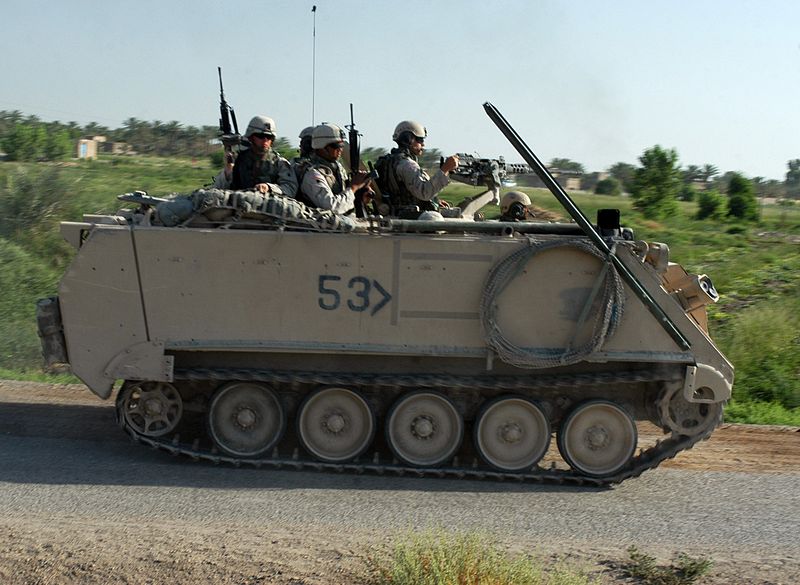
M113A3 in Operation Iraqi Freedom, 2003.
Israeli M113s
The Israeli defense Forces took advantage of the M113, receiving very large supplies of it in the late 1960s, replacing the aging M3 Half Tracks still in service under many variants. The total fleet was 6000 vehicles of this type, cumulating all variants. M113s were seen in action in the 1973 Yom Kippour war, and in the 1980s in Lebanon. More recently they had been seen in action in the second Intifada and 2006 Gaza and Lebanon Wars (as far as 2014's Operation Protective Edge). The IDF found these vehicles vulnerable to modern ATGMS, RPGs but also IEDs and devised many protection variants and upgrades. Due to budget constraints these are still equipping the bulk of mechanized infantry regiments as of today. Experience with this vehicle led to design the Namer APC.Other conflicts
Due to its widespread availability, the M113 saw also action in the Indo-Pakistani War of 1965 and 1971 (on the Pakistani side), Lebanese Civil War, South Lebanon conflict (1985–2000), Iran–Iraq War, Kosovo, Waziristan, Libyan Civil War, Syrian Civil War and ISIS war.Replacement
The M113 is a 1960 vehicle as of 2015, meaning it has a 40 years service span, which is quite comfortable for any US Army vehicle. It is excellent in its basic configuration of tracked APC, but not totally devoid of small issues, and in the meantime tactical concepts changed to the point of seeking new catergories of versatile wheeled APC or better armoured ACs optimized for urban combat. Because fo this, the Armored Multi-Purpose Vehicle (AMPV) program was launched to replace the initial two programs, one to replace the basic M113 called the BCT Ground Combat Vehicle Program and one to replace all derivative variants called the GCV Infantry Fighting Vehicle. First deliveries were scheduled for 2018 but budget reduction will possibly have the program delayed. 2,897 in total are ordered for five mission roles at the brigade level and below, within armored brigades. Both BAE Systems with the Bradley and General Dynamics with the Stryker will fill intermediary niches, completed by Navistar Defence's Maxxpro MRAP. So the future tracked APC will be part of a combined array of vehicles, a real departure over the mass production philosophy of the cold war, more adapted to asymmetric warfare, urban warfare and new threats in general. 12 brigades are to be equipped with the AMPV until 2020, but the M113 will be maintained at least until 2030, making it the longest service armoured vehicle in the history of the United States.Local production
The M113 was also built outside the USA. Given how the design was successful, and that the park of actual M113 and variants needed repairs and maintenance on a large scale, three countries at least developed their own manufacturing plants. These were either clones or enhances version by the way. Pakistan for example revealed the Talha which shared a lot of parts in common with the M113. Turkey produces the ACV-300 (based on the AIFV, itself an evolved version of the M113). Egypt produces also the M113A4 as well as many of its variants.M113 APC links & resources
The M113 APC on Wikipedia Variants of the M113 (wikipedia) The M113 on Military-today The M113 on FAS.org The M113 and variants on globalsecurity.org Some interesting facts & figure and point of view about the M113 Walkaround photos of the M113A2
M113 APC specifications |
|
| Dimensions (L-w-H) | 4.86 x 2.68 x 2.50 m (15.11 x 8.97 x 8.2 ft) |
| Total weight, battle ready | 12.3 tonnes (24,600 lbs) |
| Crew | 5 (Commander, Driver, 11 infantry) |
| Propulsion | Detroit 6V53T, 6-cyl. diesel 275 hp (205 kW) P/w 22.36 hp/tonne |
| Transmission | Allison TX-100-1 3-speed automatic |
| Maximum speed | 42 mph (68 km/h) road/3.6 mph (5.8 kph) swimming |
| Suspensions | Torsion bars |
| Range | 300 miles/480 km |
| Armament | Main: cal.50 12.7 mm (0.5 in) Browning M2HB MHG, 800 rounds Sec: 2 portable M60 0.3 in (7.62 mm) - see notes. |
| Armor | Aluminum alloy 12–38 mm (0.47–1.50 in) |
| Production (all combined) | 80,000 |
Author's illustrations
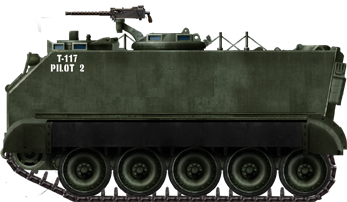
Early prototype FMC T117.
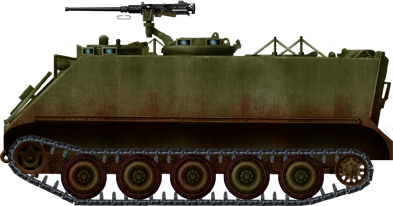
M113 APC, first gasoline version, with the trim vane erected, 1961.
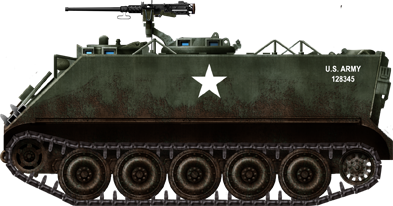
M113A1, early production, 1964.
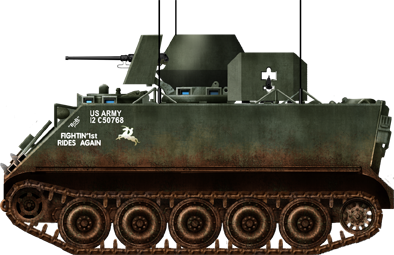
M113A1 ACAV Vietnam 1966.
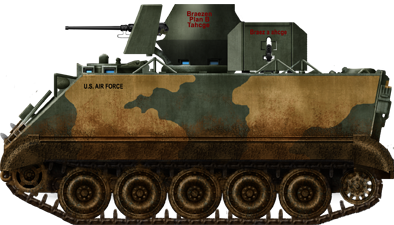
M113A1 ACAV of the US Air Force in Vietnam.
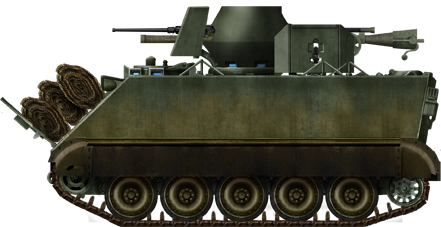
M113A1 ACAV with a M40 105 mm recoiless gun in Vietnam.
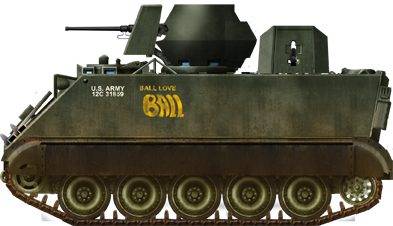
M113A1 ACAV "Ball Love" of the 1st Squadron 11th Armoured Cavarly Regiment 1960s.
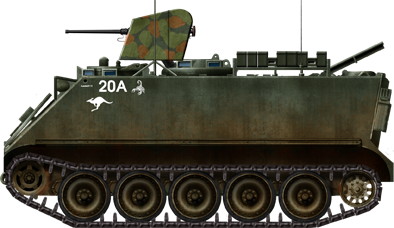
Australian M113A1 in Vietnam, 1970.
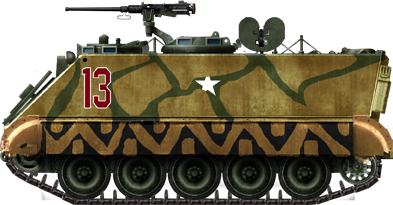
M113A1 in Vietnam, location unknown, 1969.
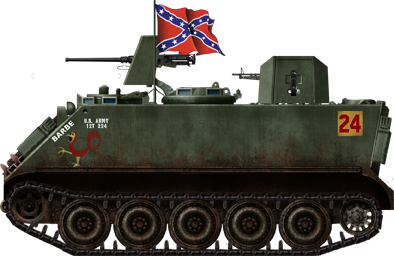
M113A1 of the US Marines at Da Nang, 1970.
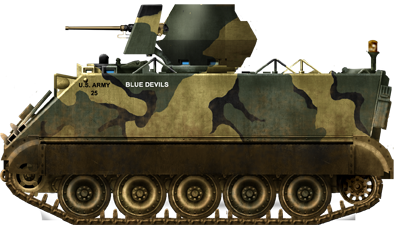
M113A1 ACAV "Blue Devil" 4th Batallion, 16th Infantry Regiment, 1st Infantry Division, 1980s
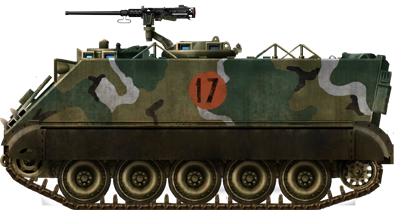
M113A1 camouflaged of a support armoured division in exercizes, 1980s
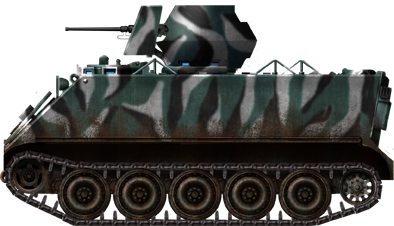
Philippine M113A1 in the 1980s
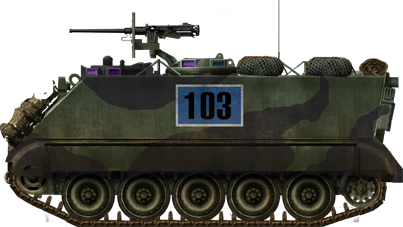
M113A2 if the US Army, 1970s.
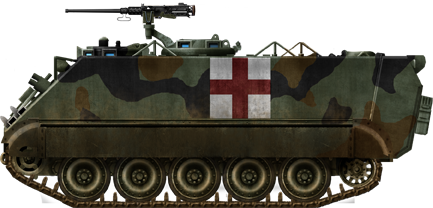
M113A2 ambulance, 1980s.
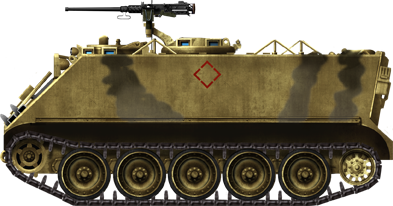
M113A2 in desert livery 1980s.
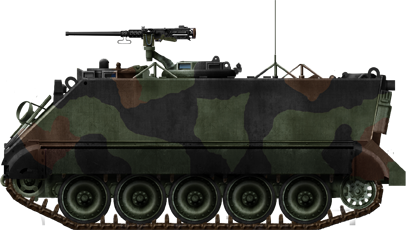
M113A2 in 1990, EOD unit - 48th Tactical Fighting wing RAF Lakenheath.
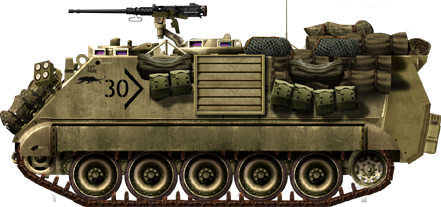
M113A2 with rear external tanks mounted, 2003.
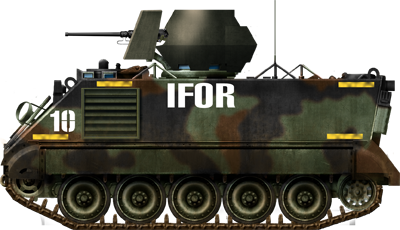
M113A2 with IFOR in Bosnia 1995.
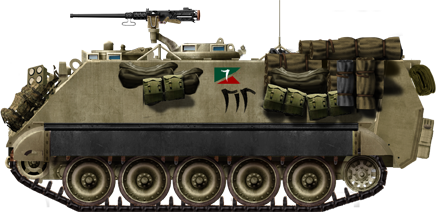
Egyptian M113A2.
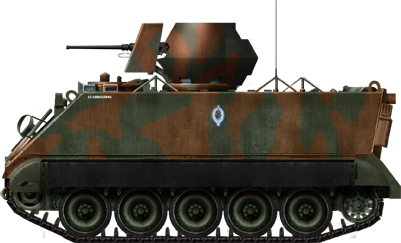
Brazilian M113A2.
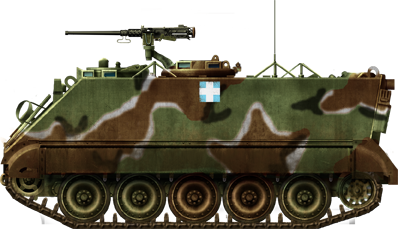
Hellenic Army M113A2.
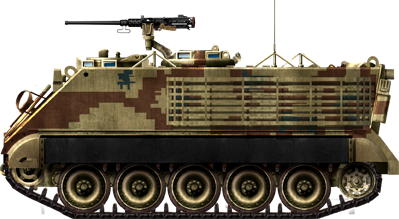
Jordanian M113A2 a SOFEX 2008.
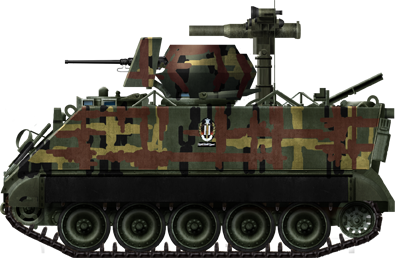
Lebanese M113A2 HOT.
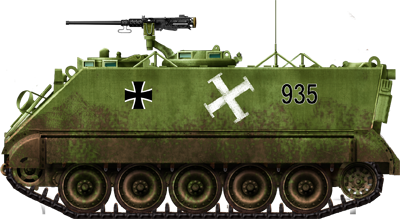
Bundeswehr M113G with manoeuvers provisional markings, 1970s.
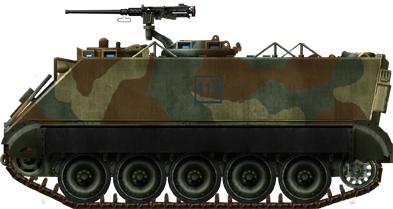
M113A3 apparently without its external fuel tanks, in MERDC livery, 1980s.
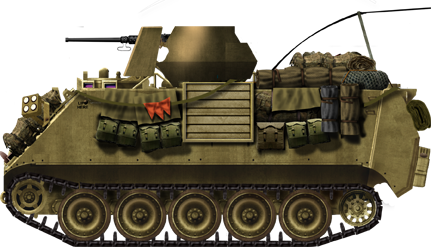
M113A3 Operation Desert Storm 1991.
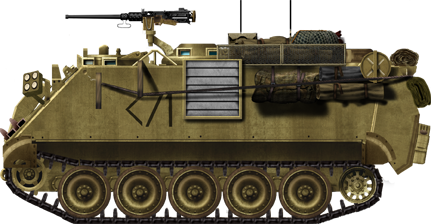
M113A3 from the recce element of the Mechanized Infantry Batallion, 3rd Infantry Division, Iraq, 1991.
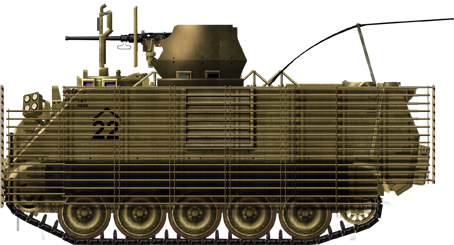
M113A3 with slat armour and urban combat modifications, Iraq, 2000s.
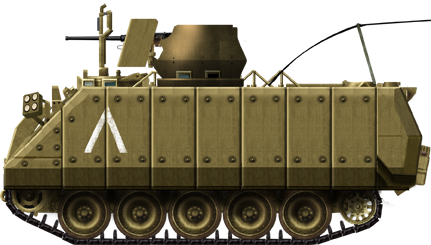
M113A3 with add-on armour, Iraq, 2000s.
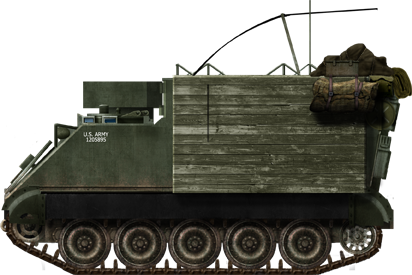
M557 Command Post, US Army in Vietnam, 1969.
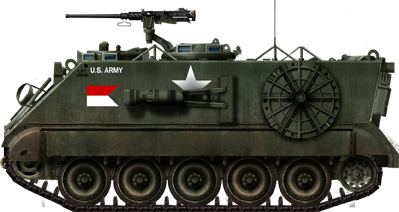
M106 Mortar Carrier, Viet nam, 1970s.
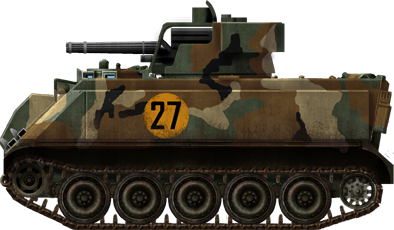
M163 SPAAG Vulcan in the 1980s.
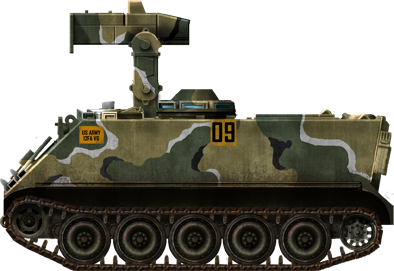
M901A1 Hammer TOW launcher Tank Hunter
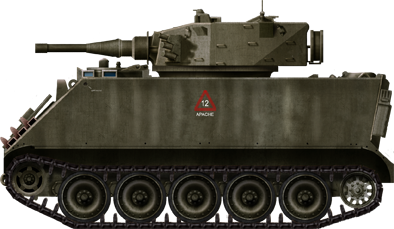
Australian M113A1 FSV/Alvis Saladin turret
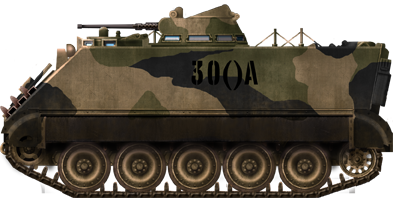
Australian M113A1 LRV/APC with the V150 Cadillac-Gage T-50 turret
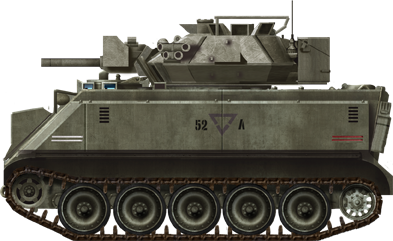
Australian M113A1 MRV in the 1980s (Scorpion Turret)
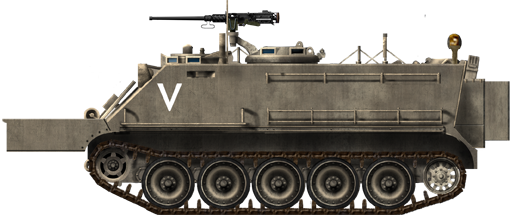
Israeli M113 ZELDA
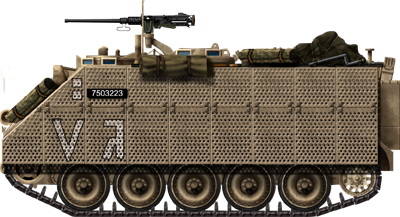
M113 IDF Zelda Toga.
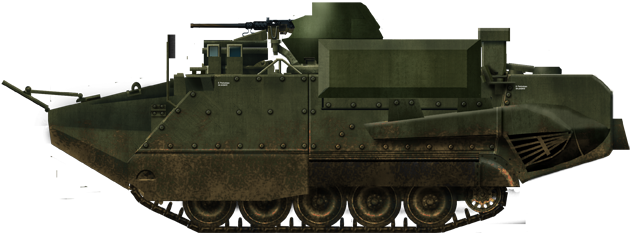
Italian Arisgator (off scale). A LVTP-7 inspired floatation kit for improved amphibious performances, developed by the Aris company
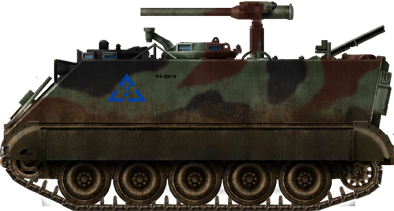
Taiwanese Army M113A2 TOW tank hunter.
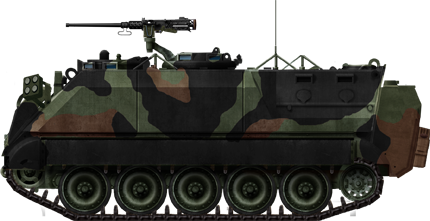
Taiwanese CM-21 APC.
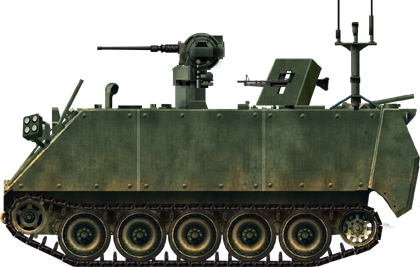
Canadian TLAV PWS (Protected Weapon System) in Iraq, 2010s.
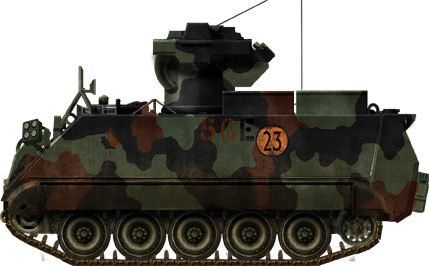
Canadian M113A2 TUA SAAM, Royal 22nd Regiment, 4th Canadian Mechanized Brigade Group, Germany
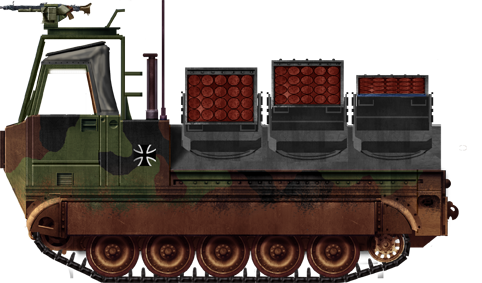
German Bundeswehr M548A1 Skorpion minelayer
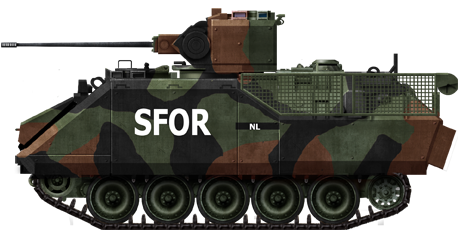
Dutch YPR 7651A Infantry Fighting Vehicle, IFOR, Bosnia, 1995.
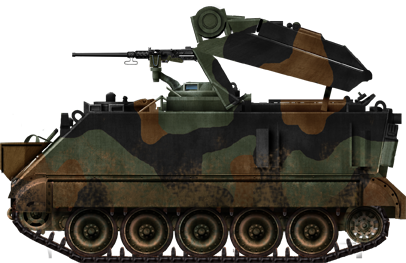
M113 FISTV Fitter ARV.
Photos
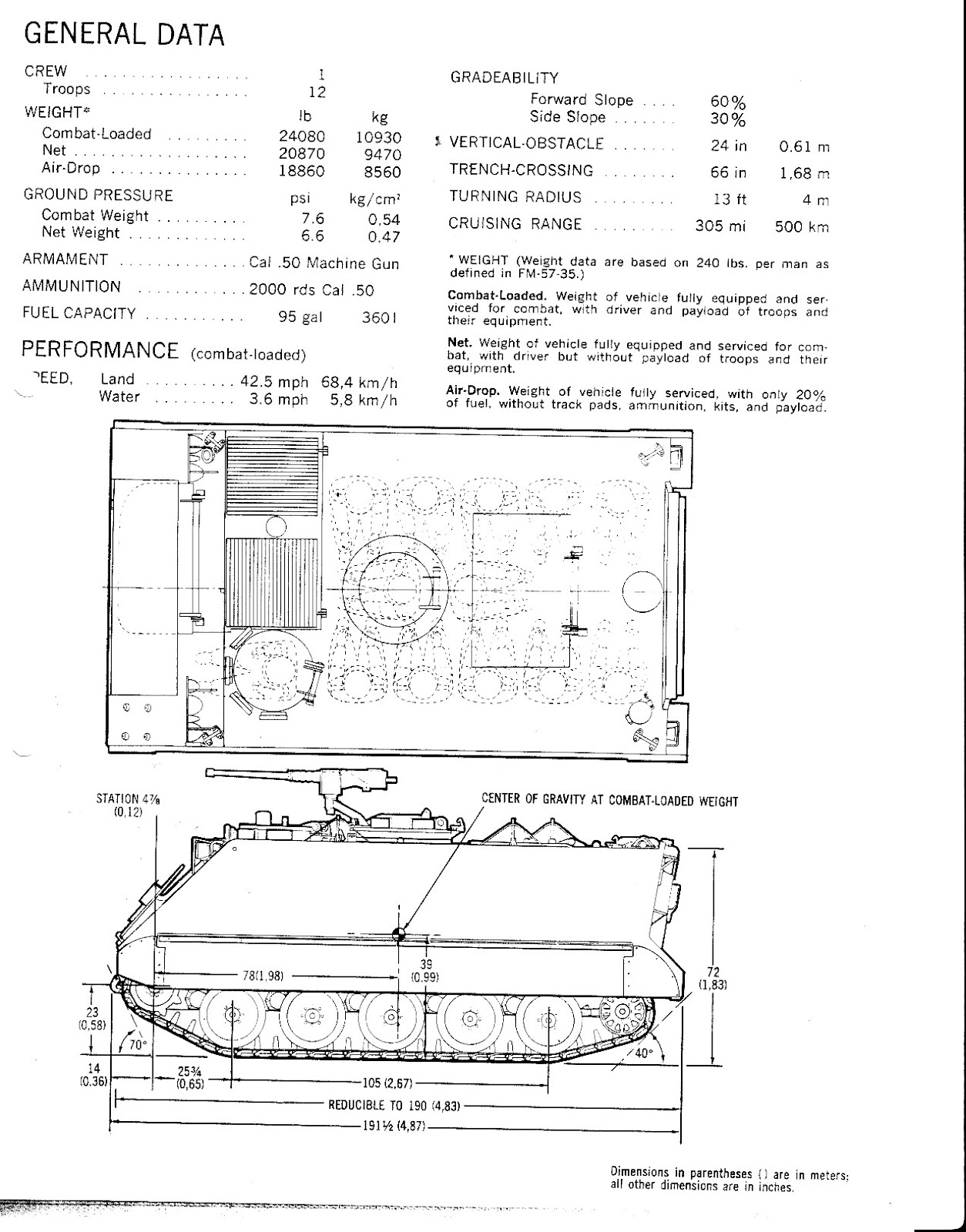
Original FMC M113 Blueprint for the US Army Ordnance.
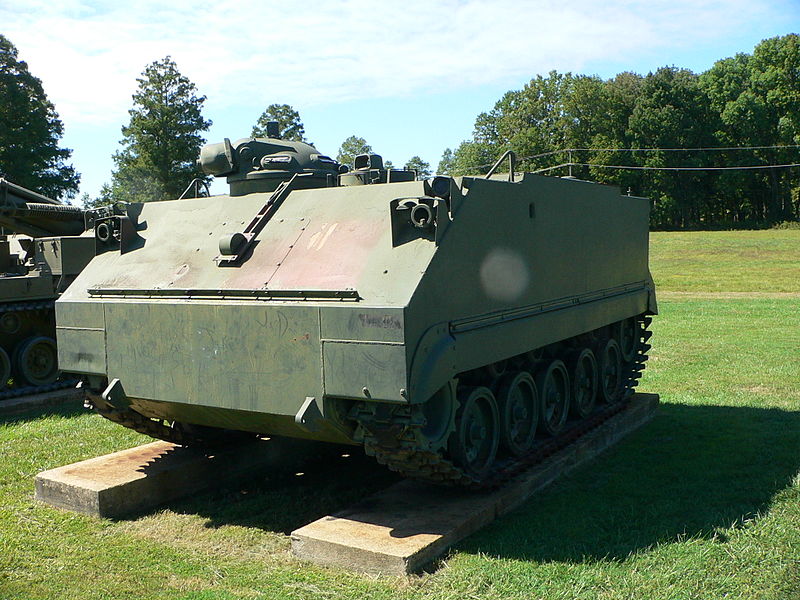
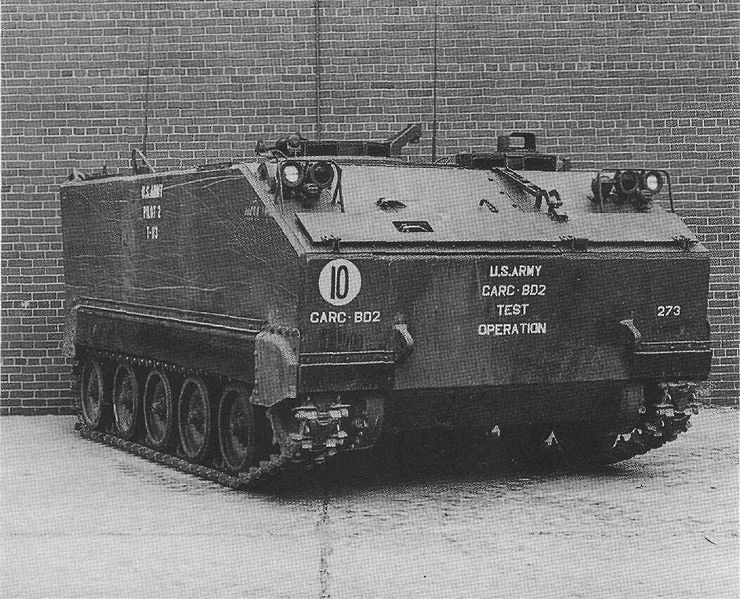
.jpg)
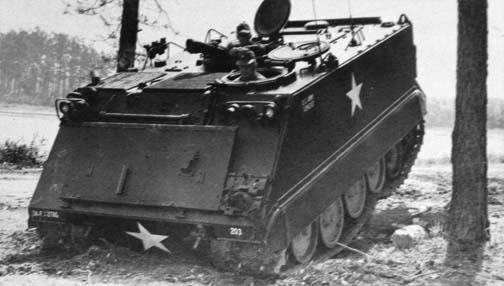
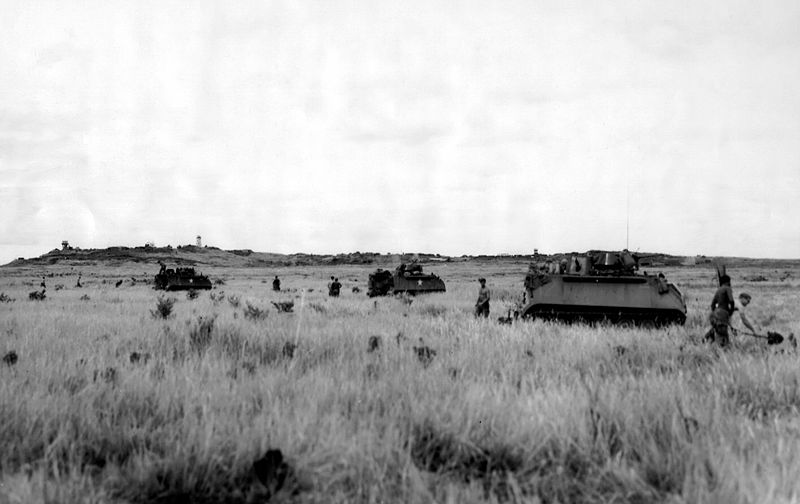
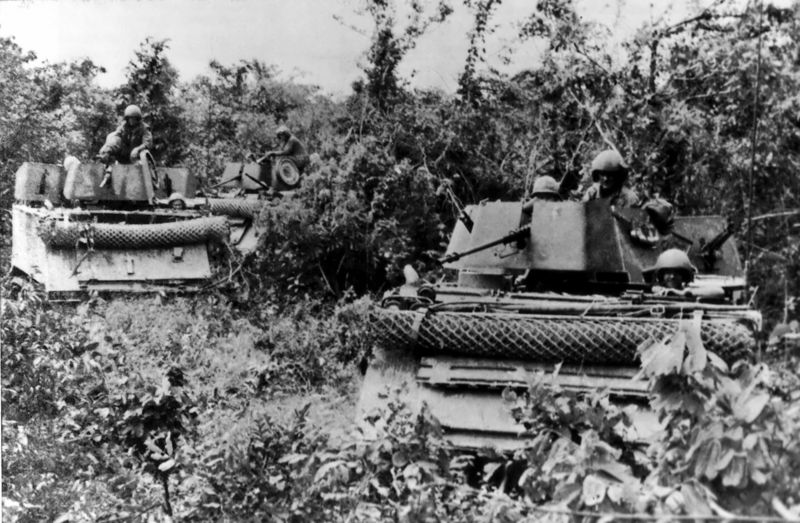
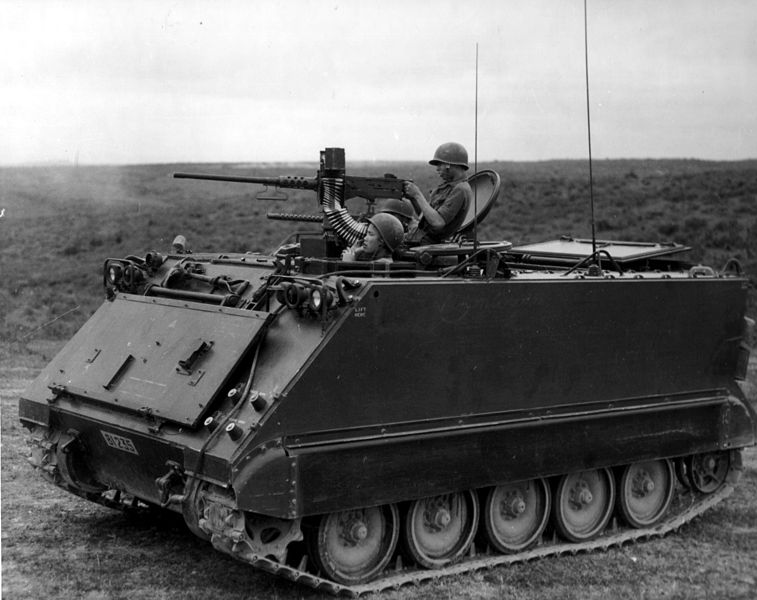
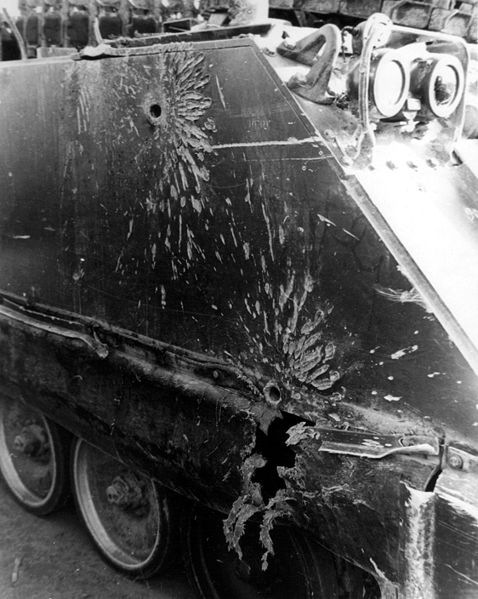
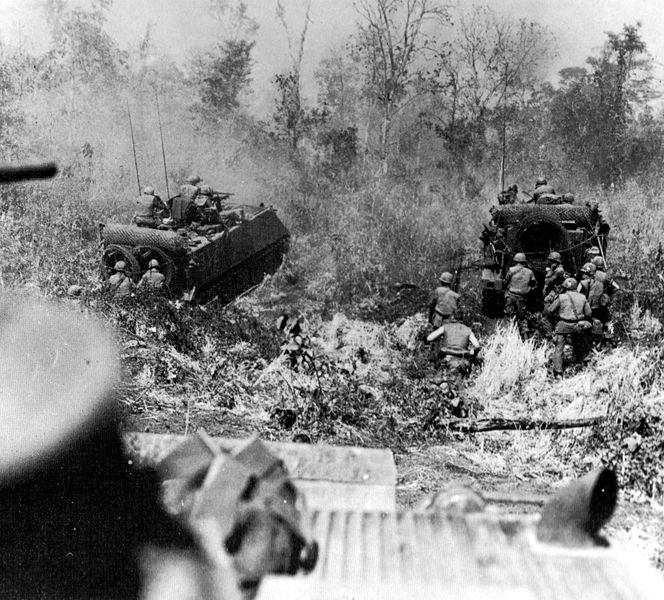
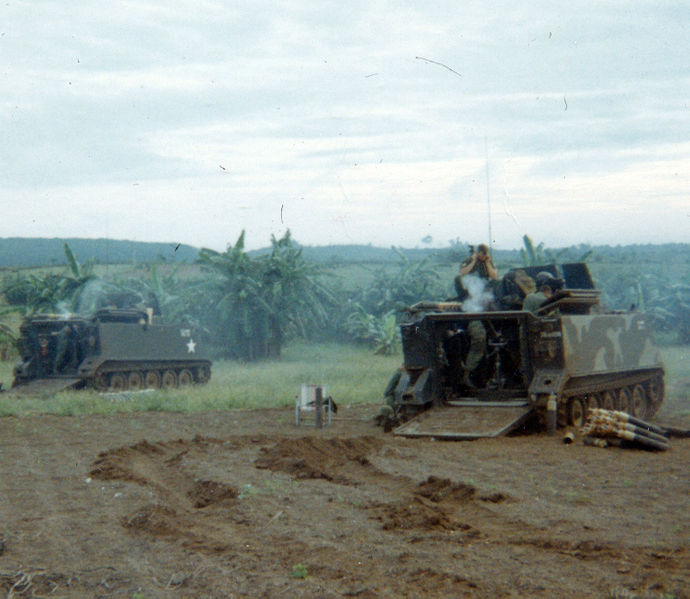
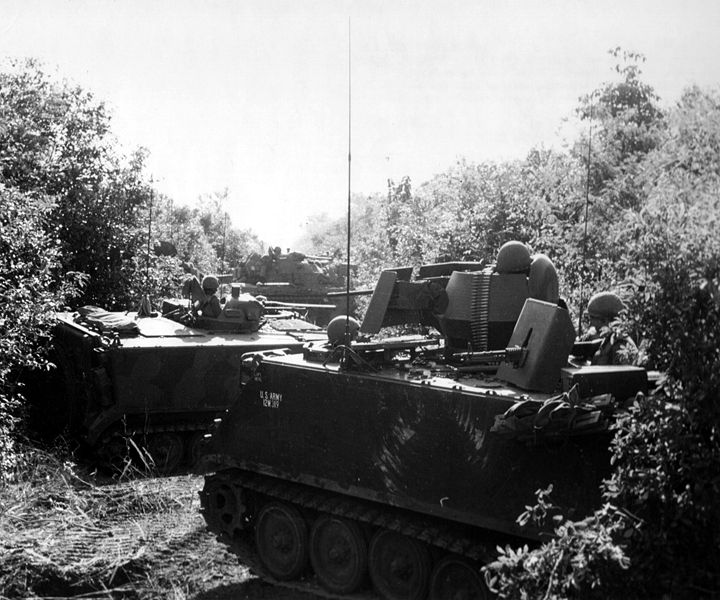
_Vietnam.jpg)
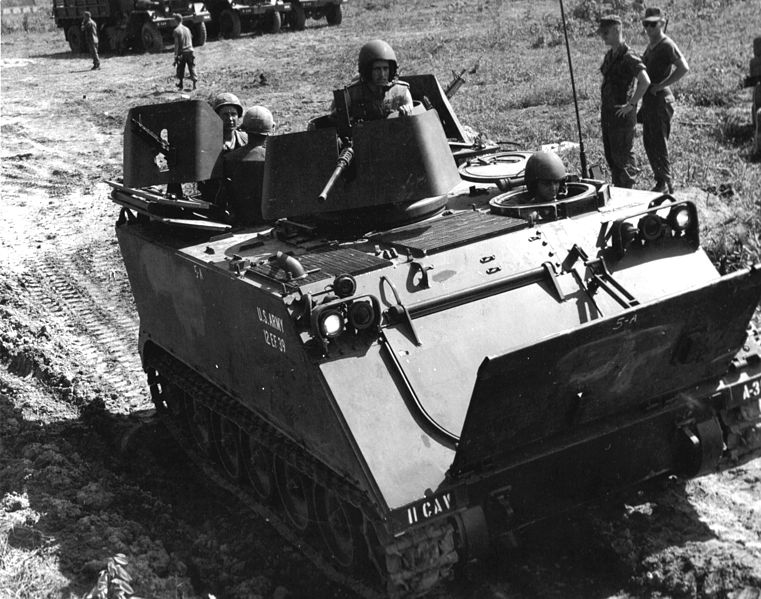
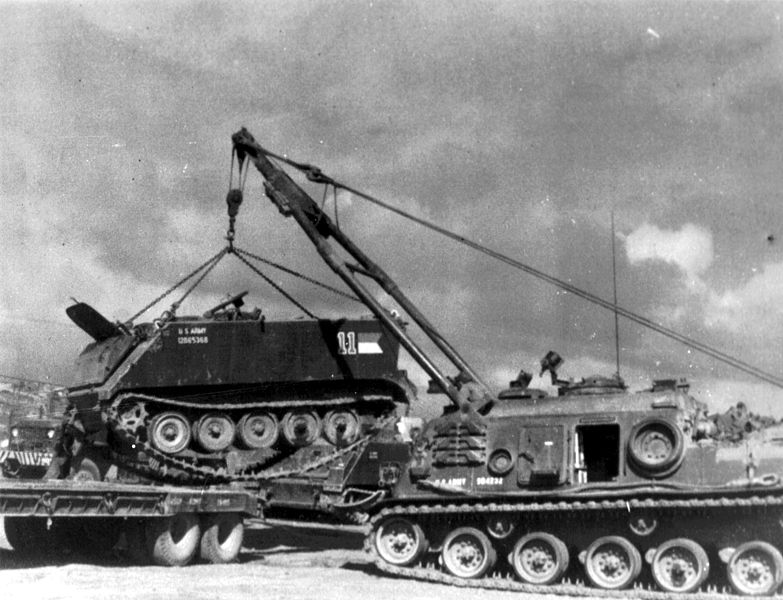
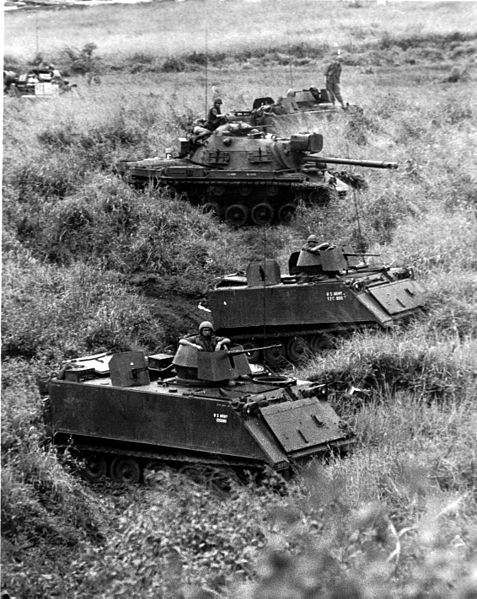
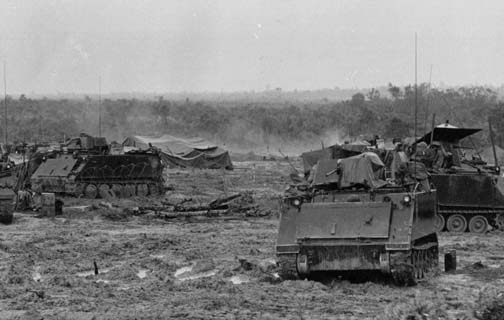
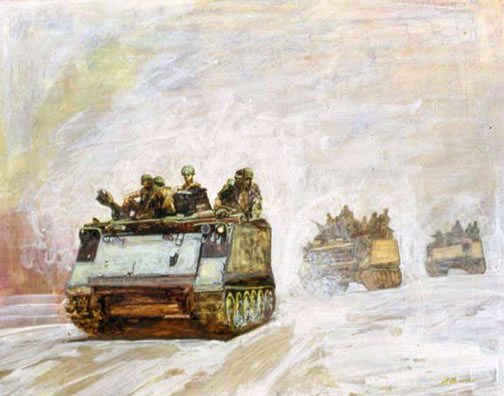
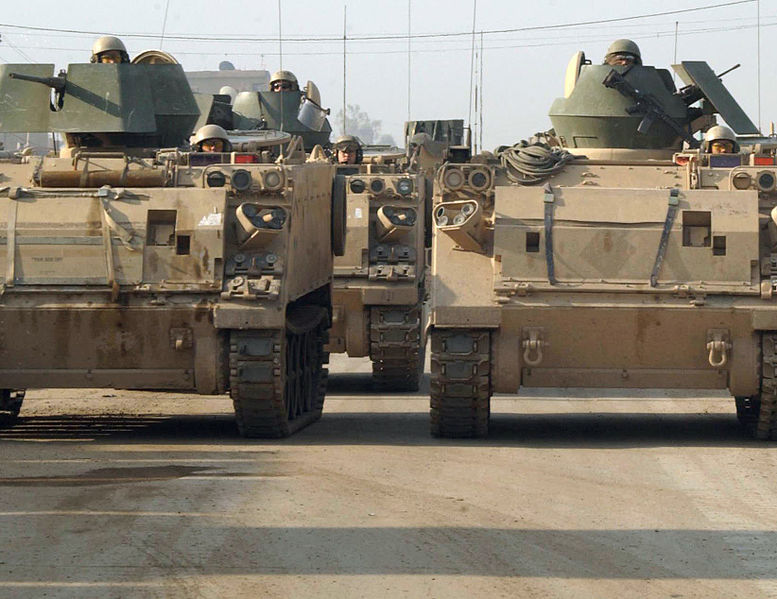
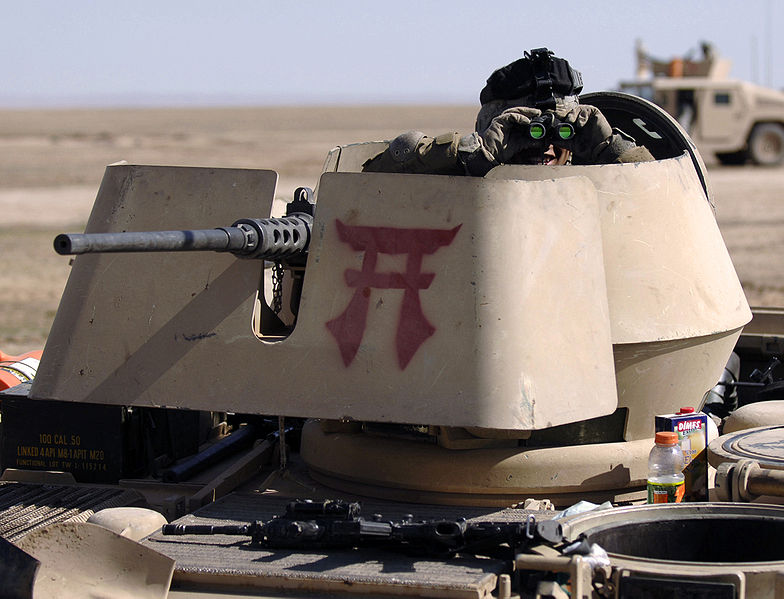
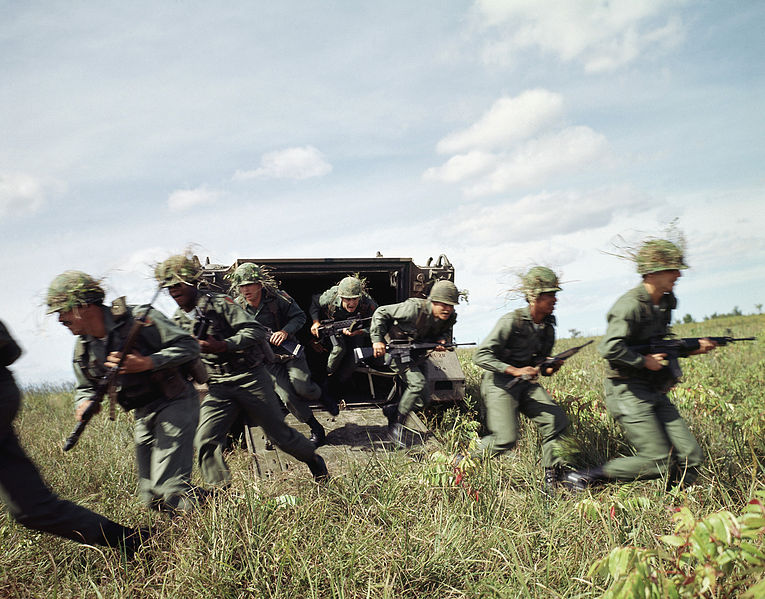
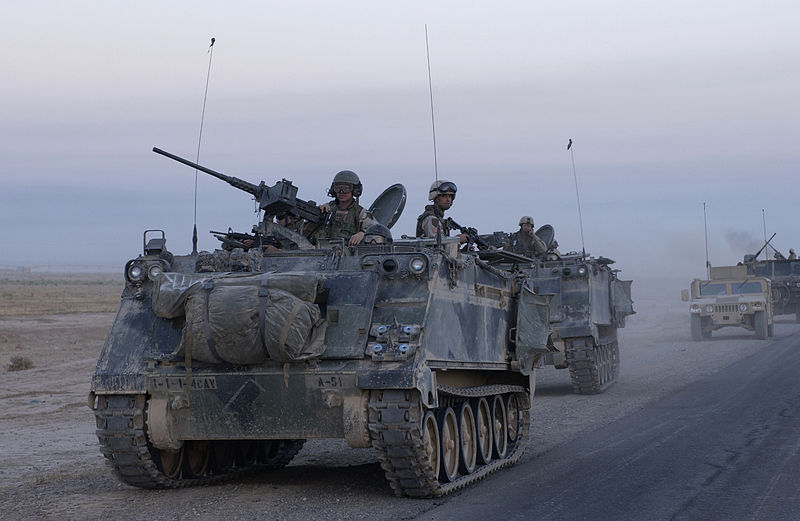
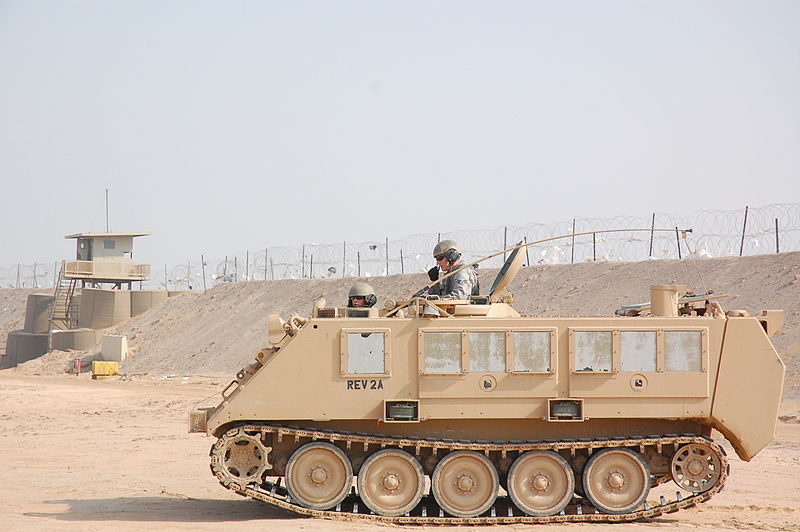
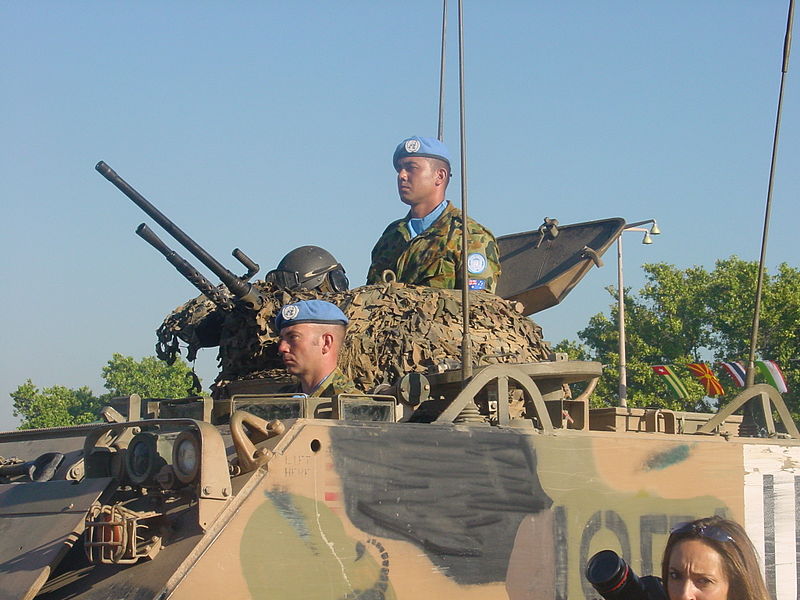
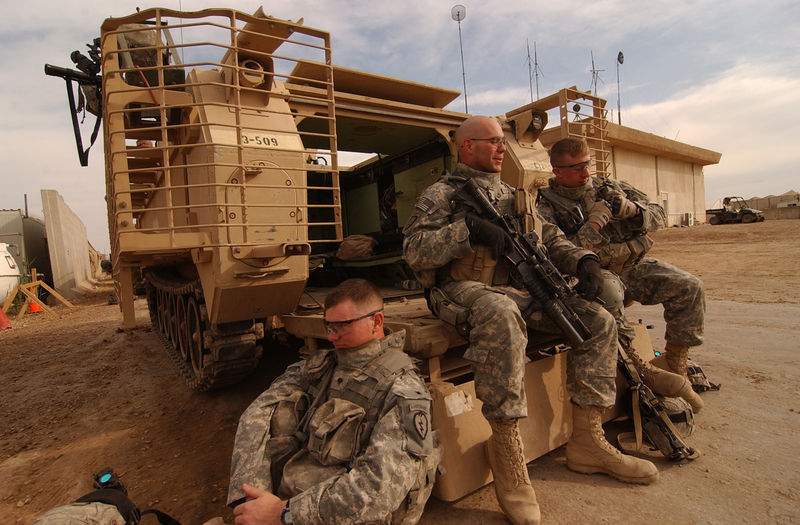
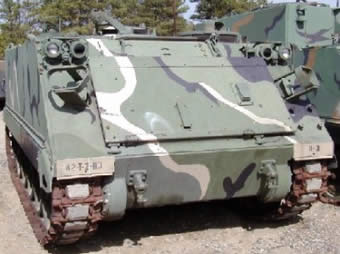
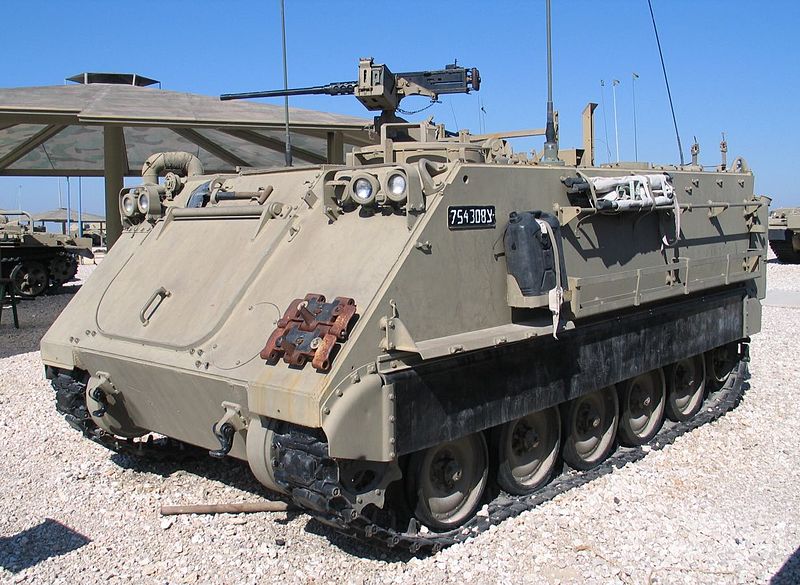
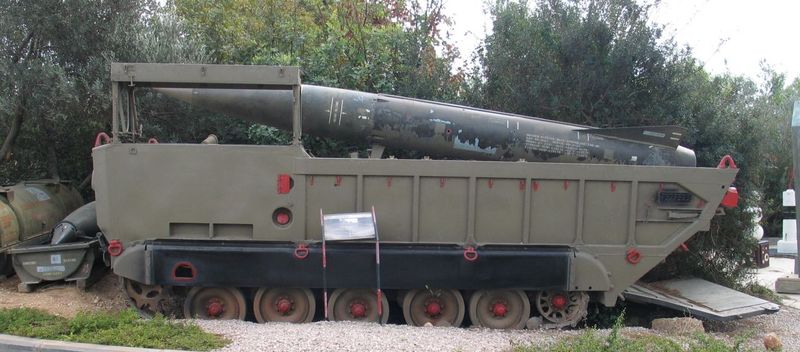
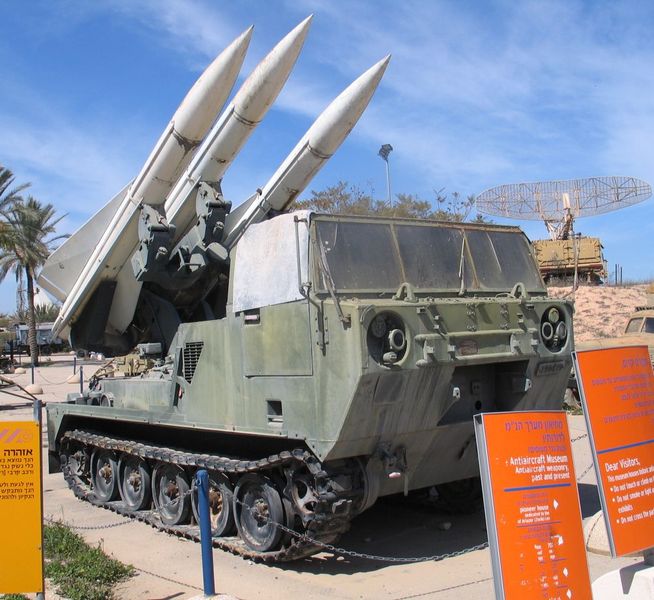
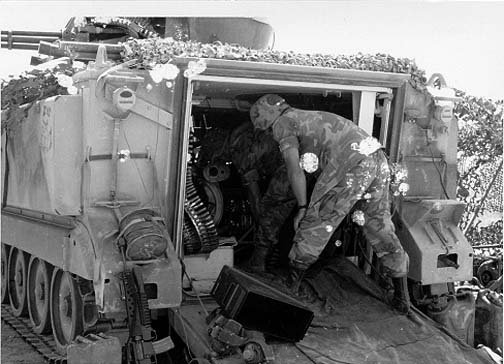
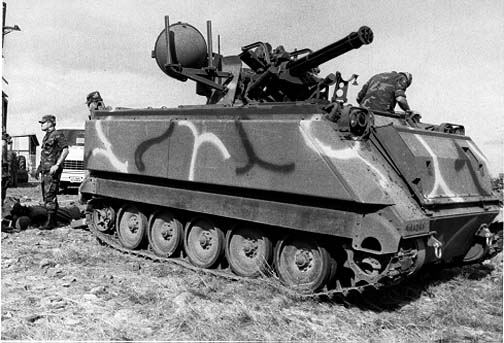
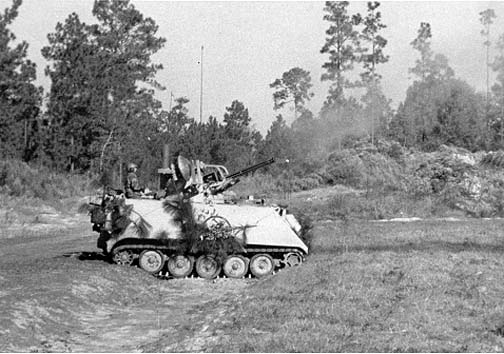
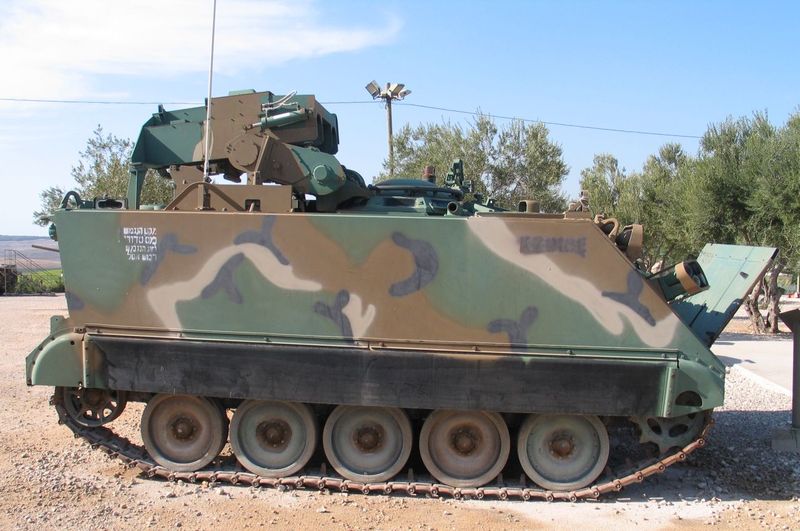
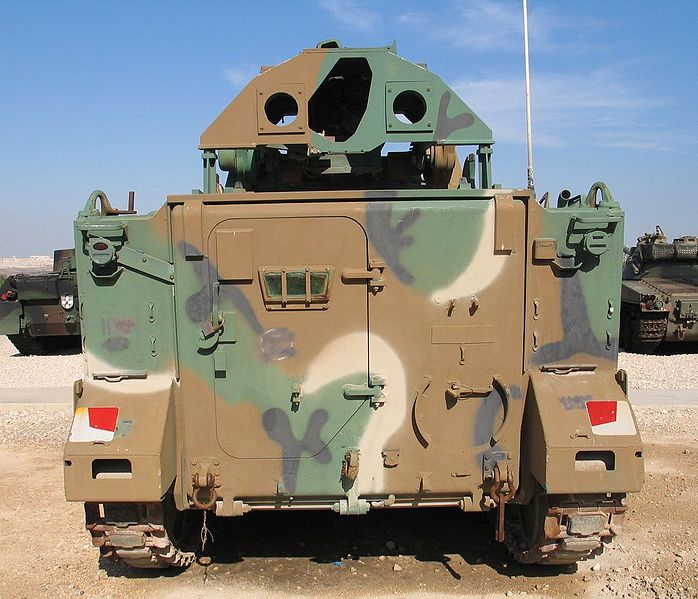
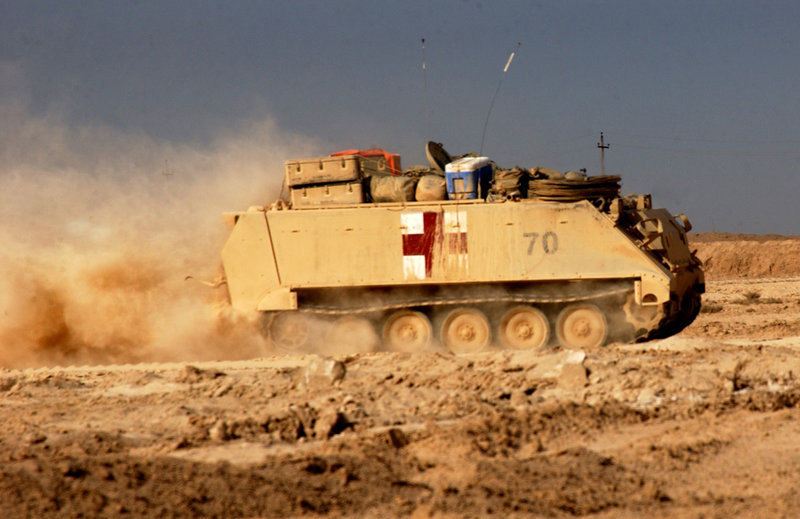
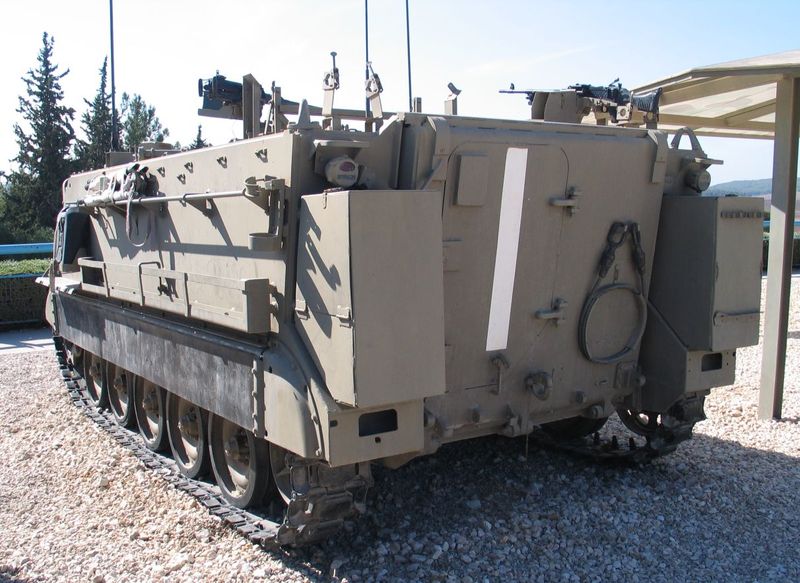
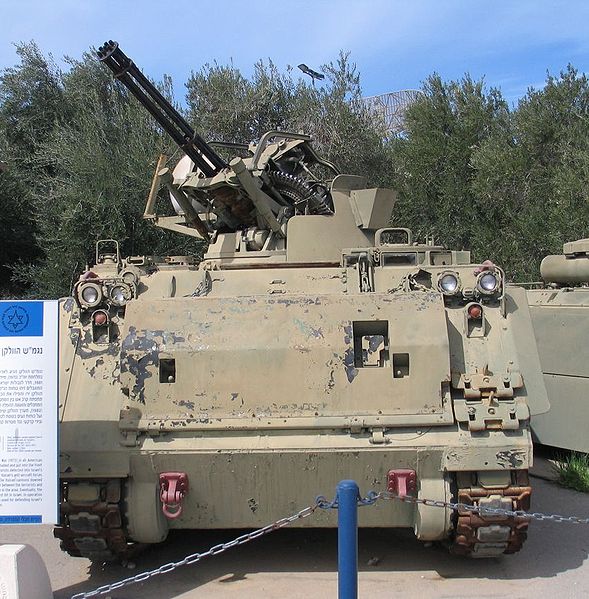
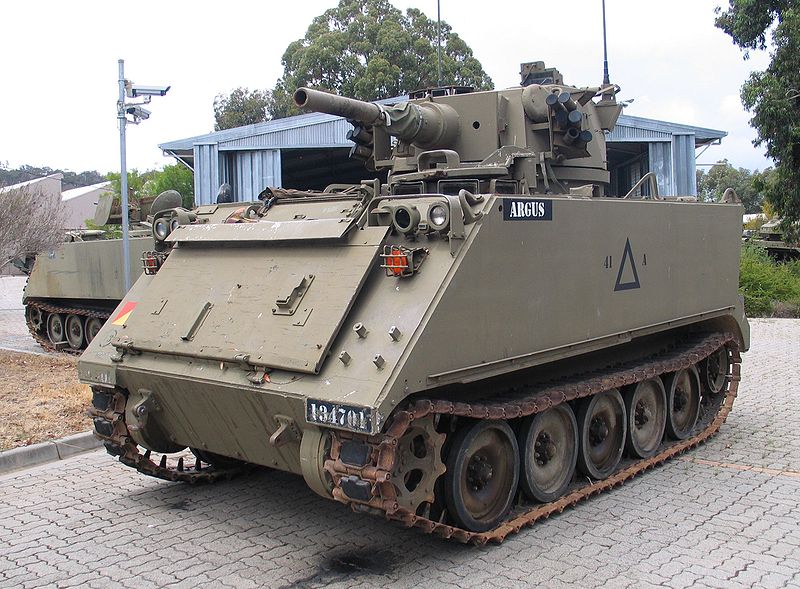
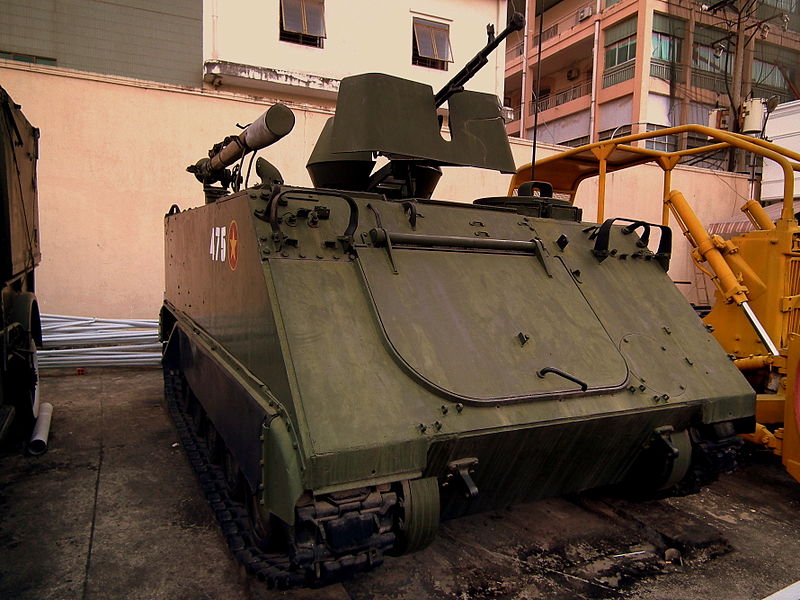

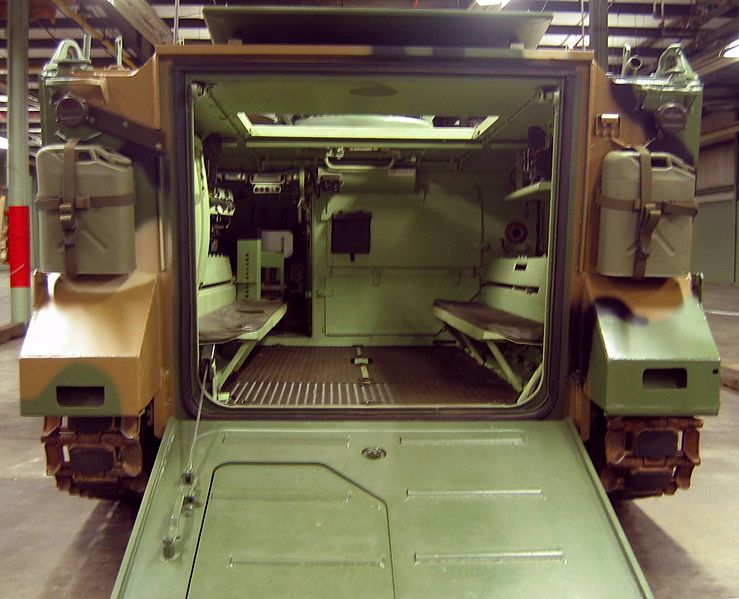
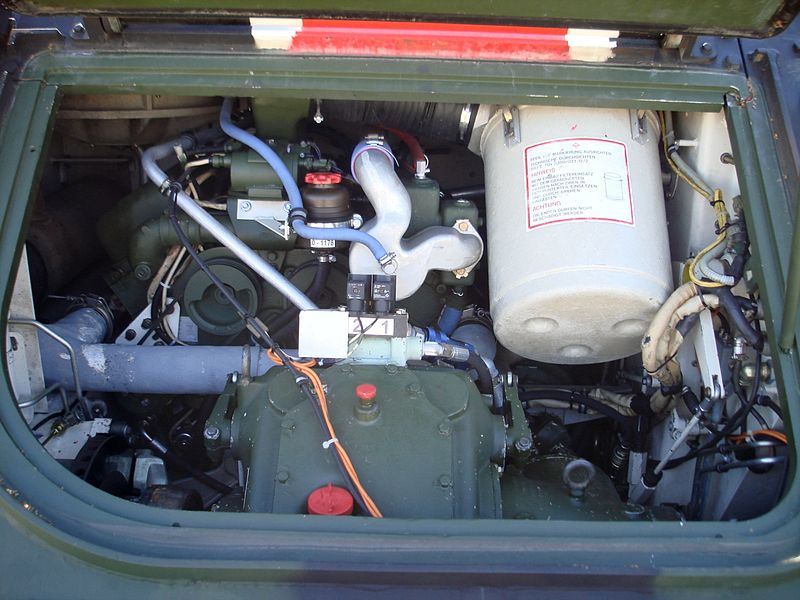
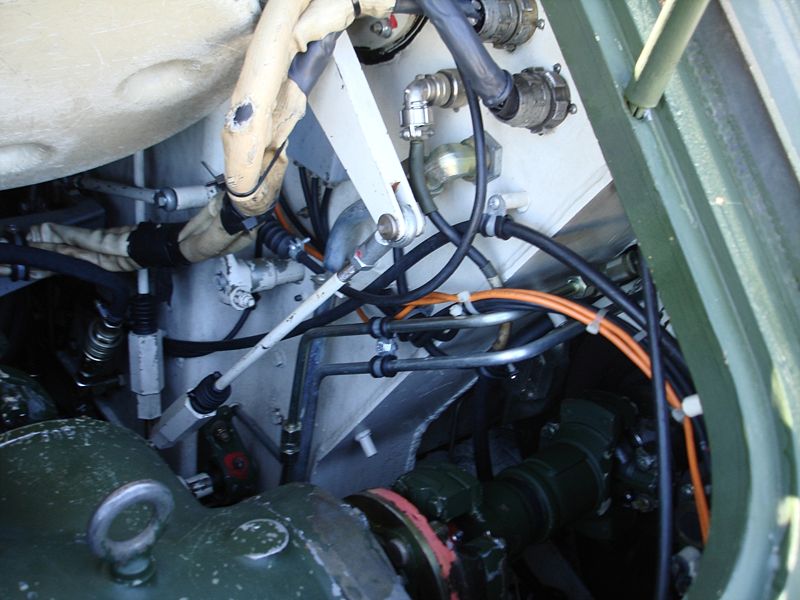
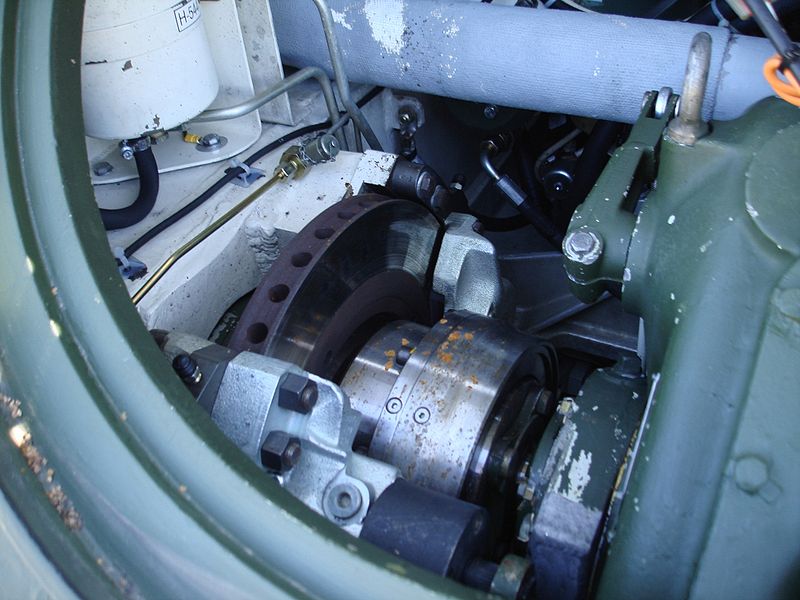
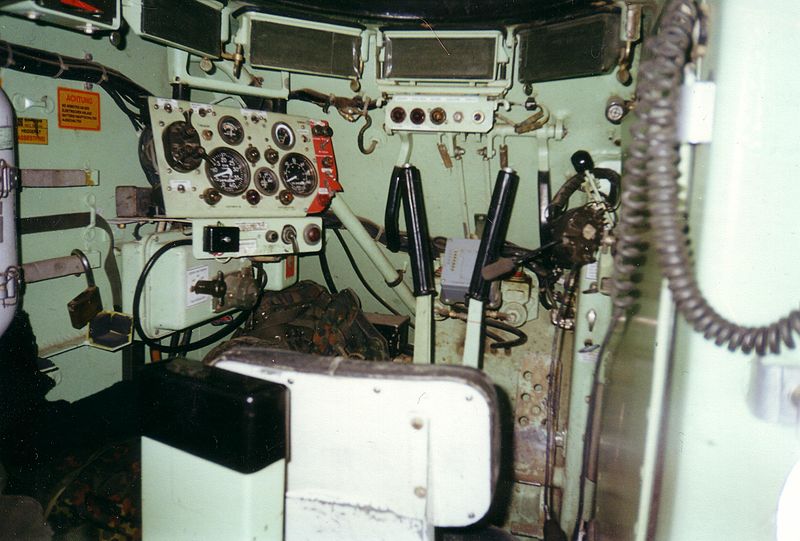
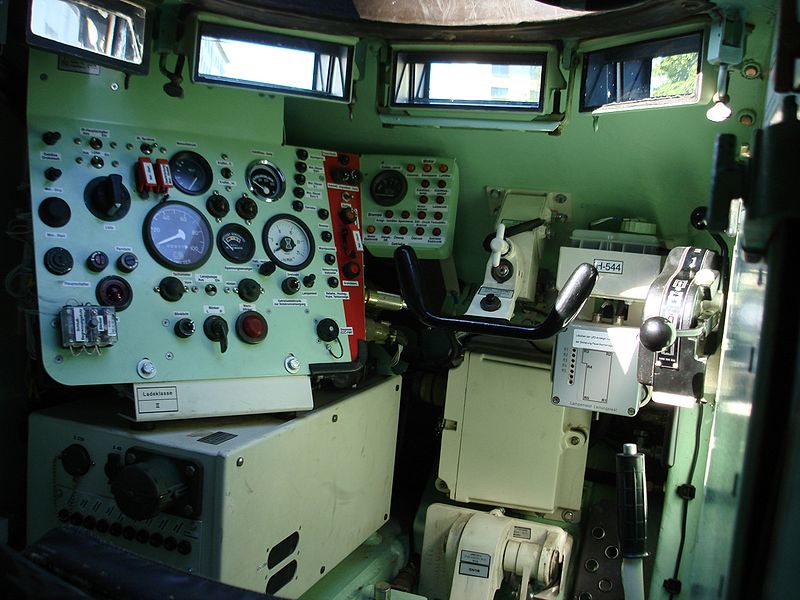
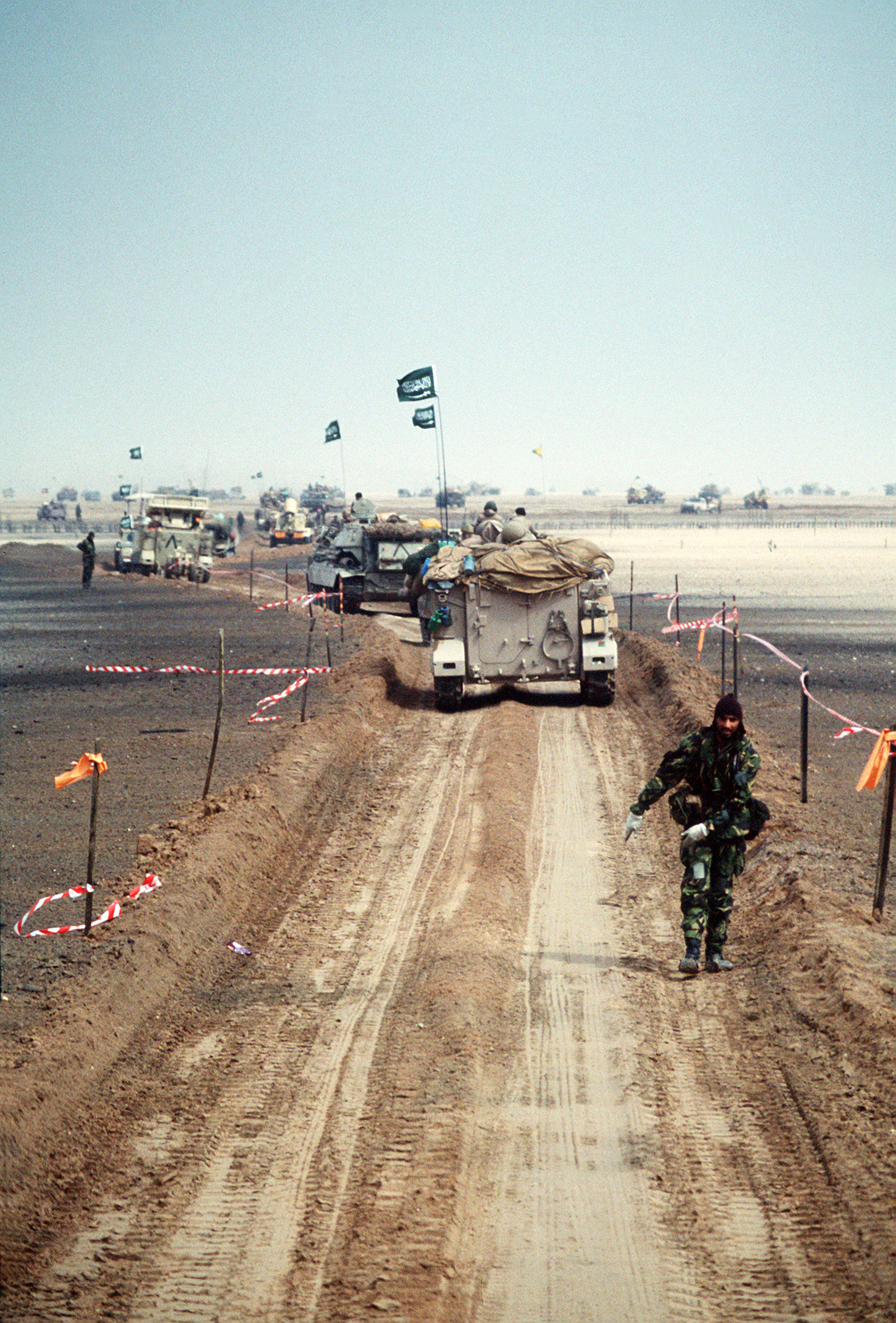
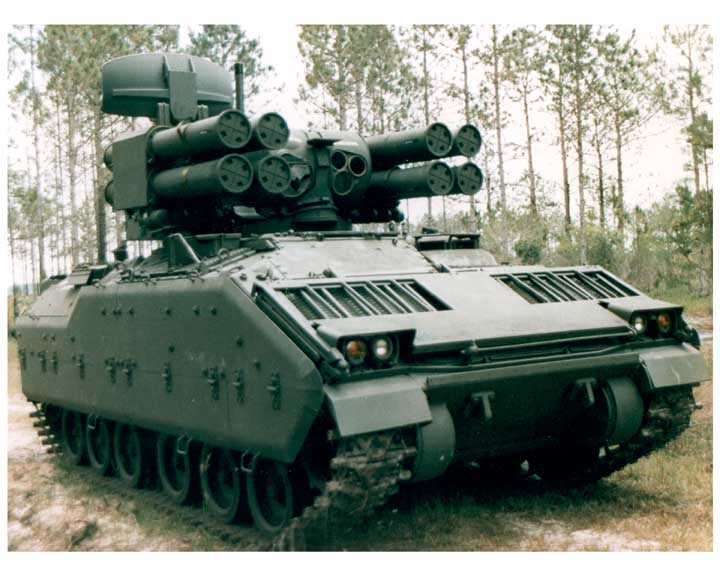
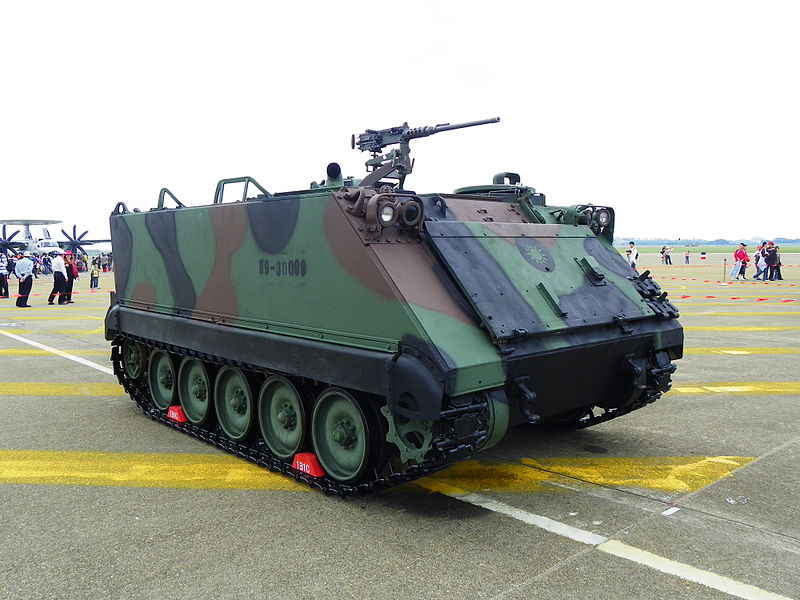
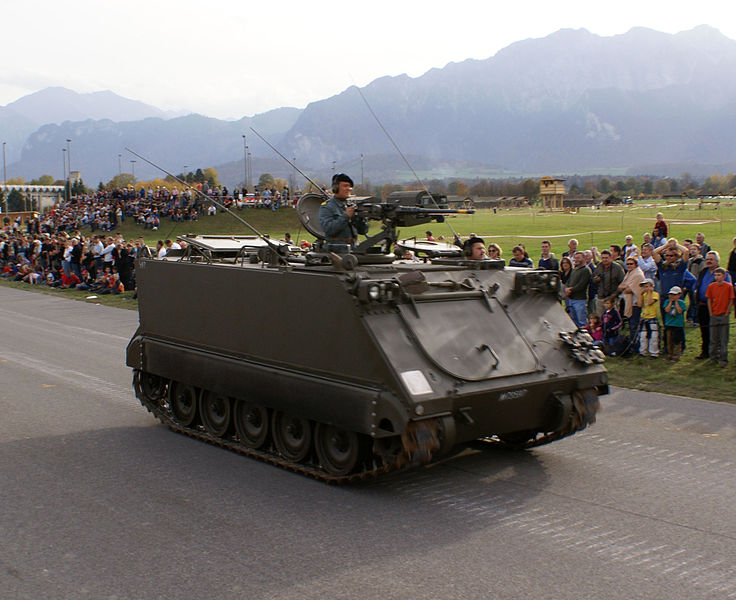
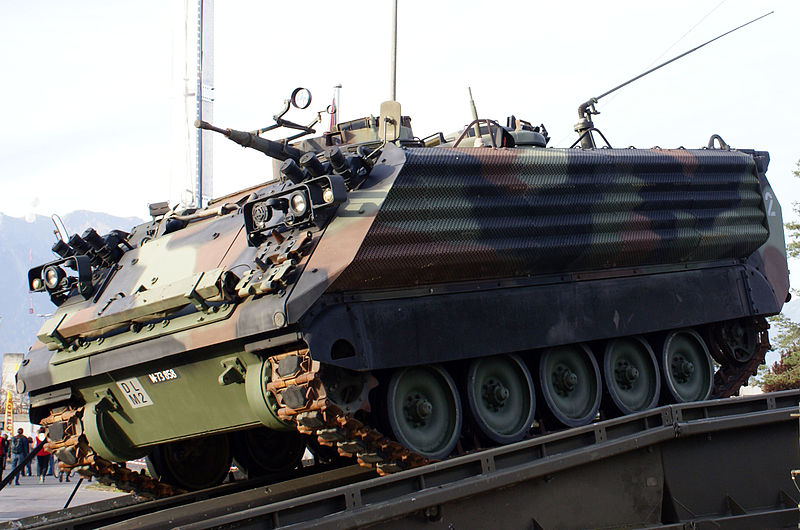
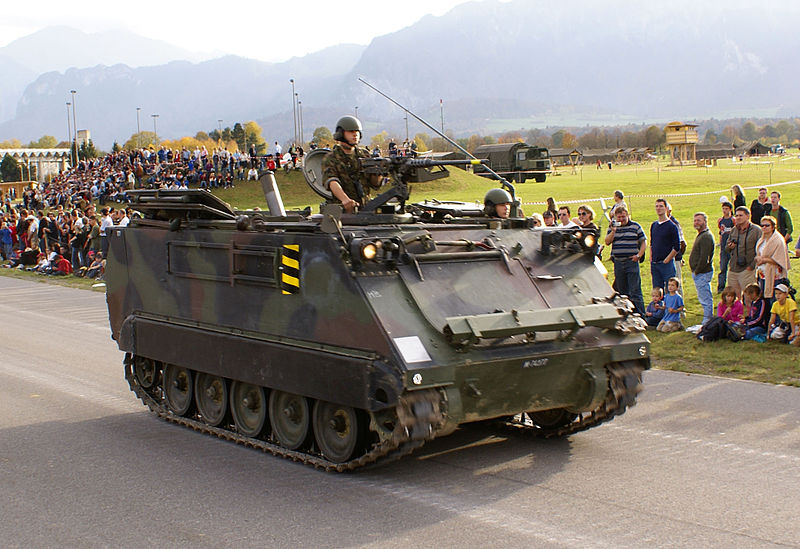
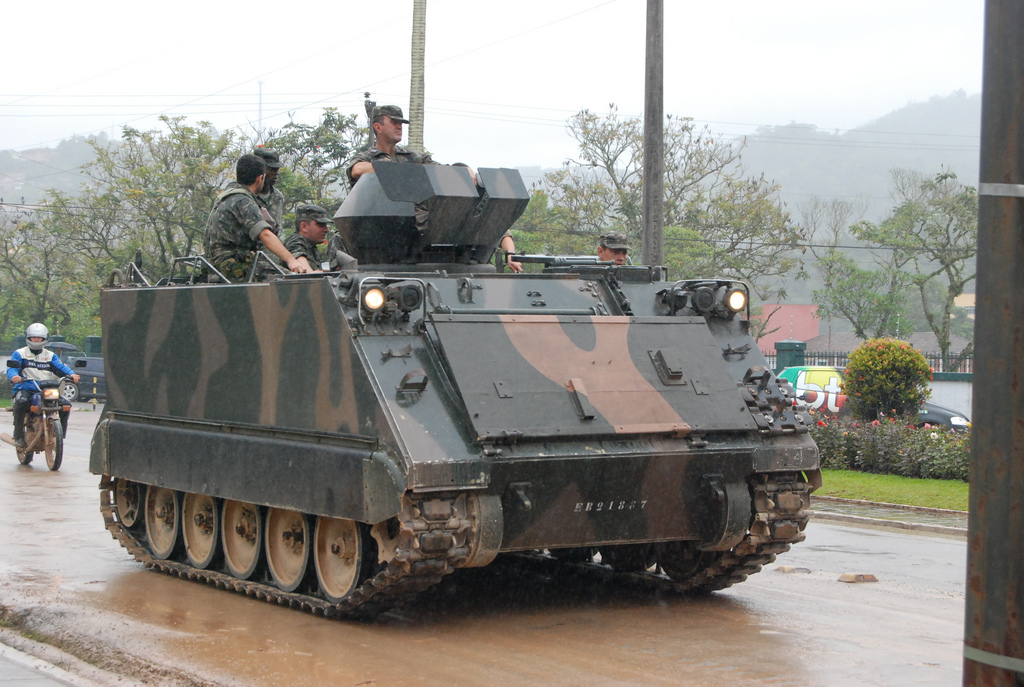
.jpg)
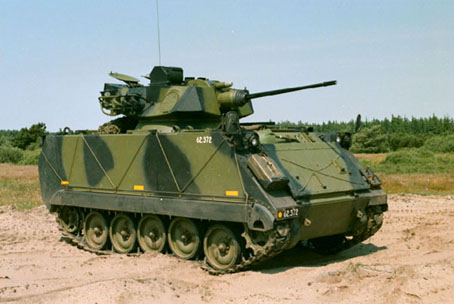
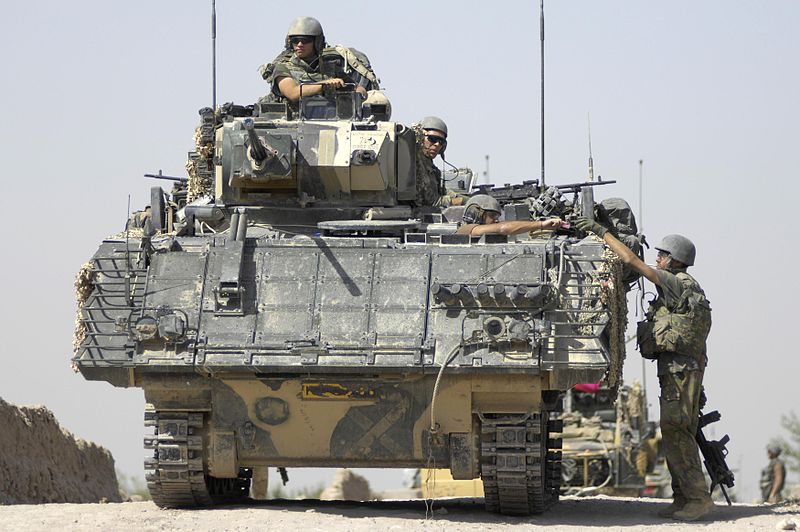
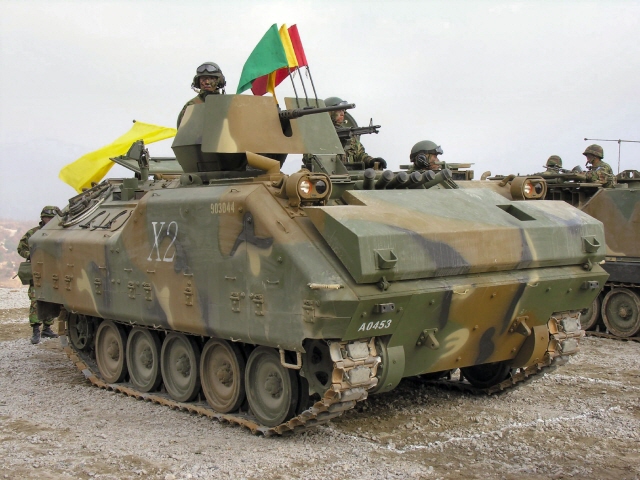
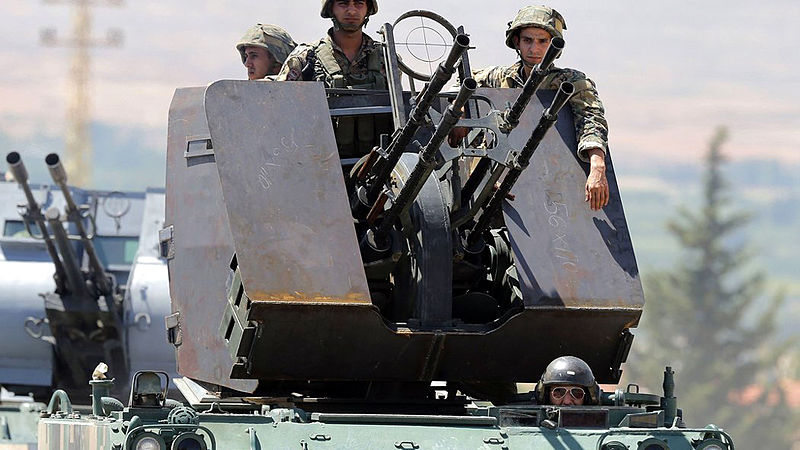
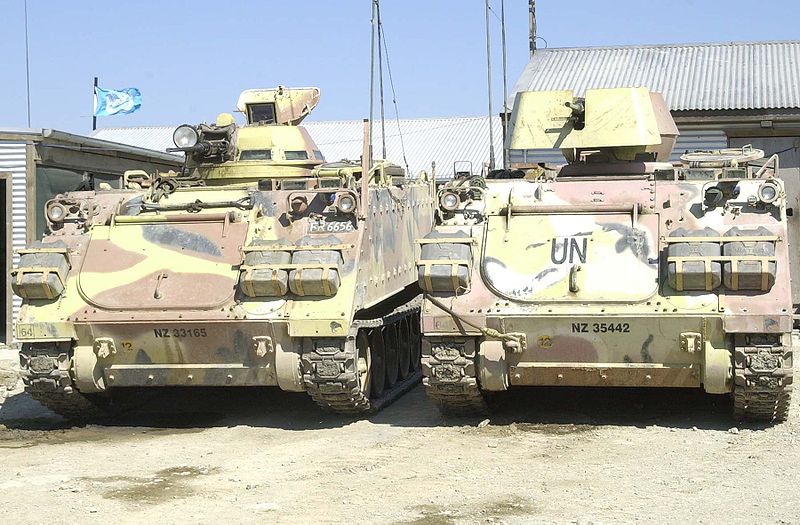
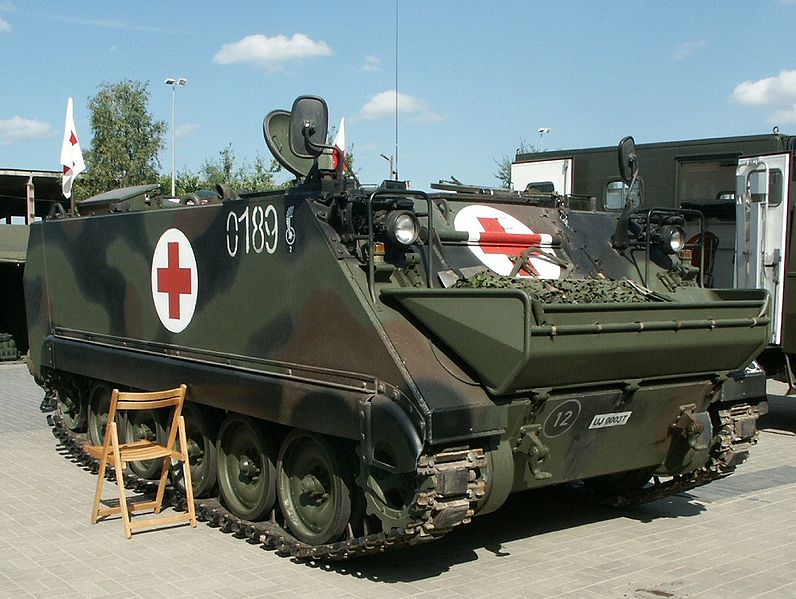
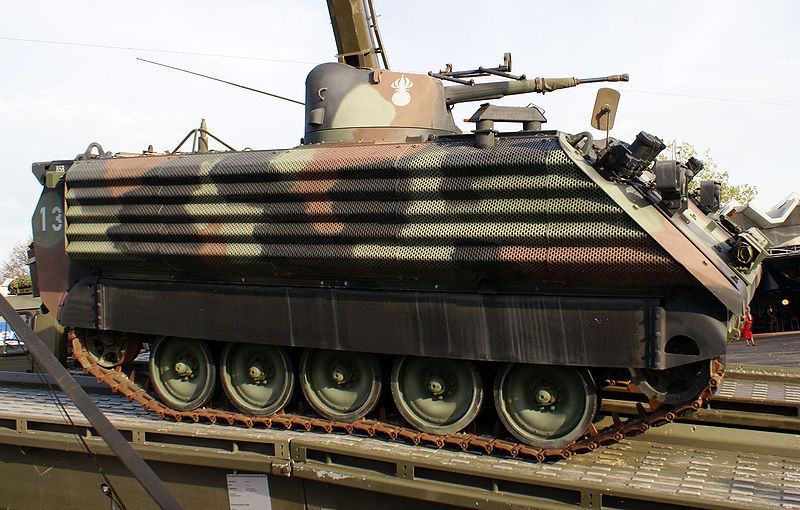
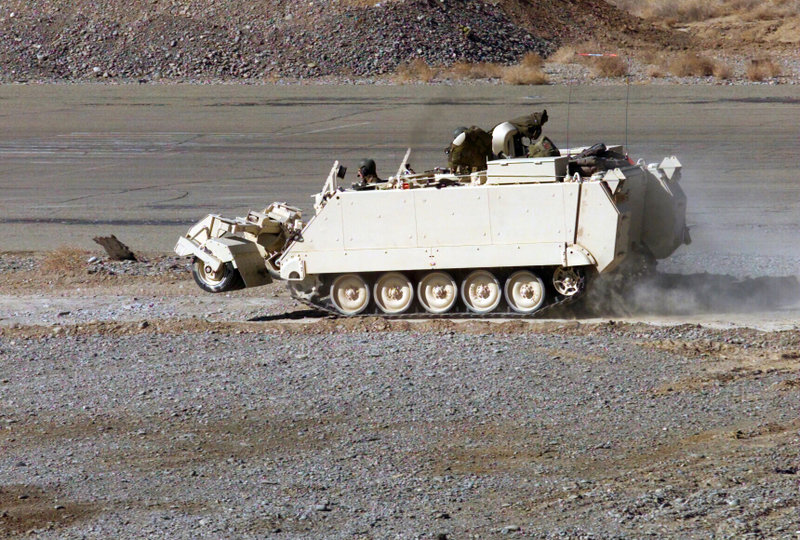
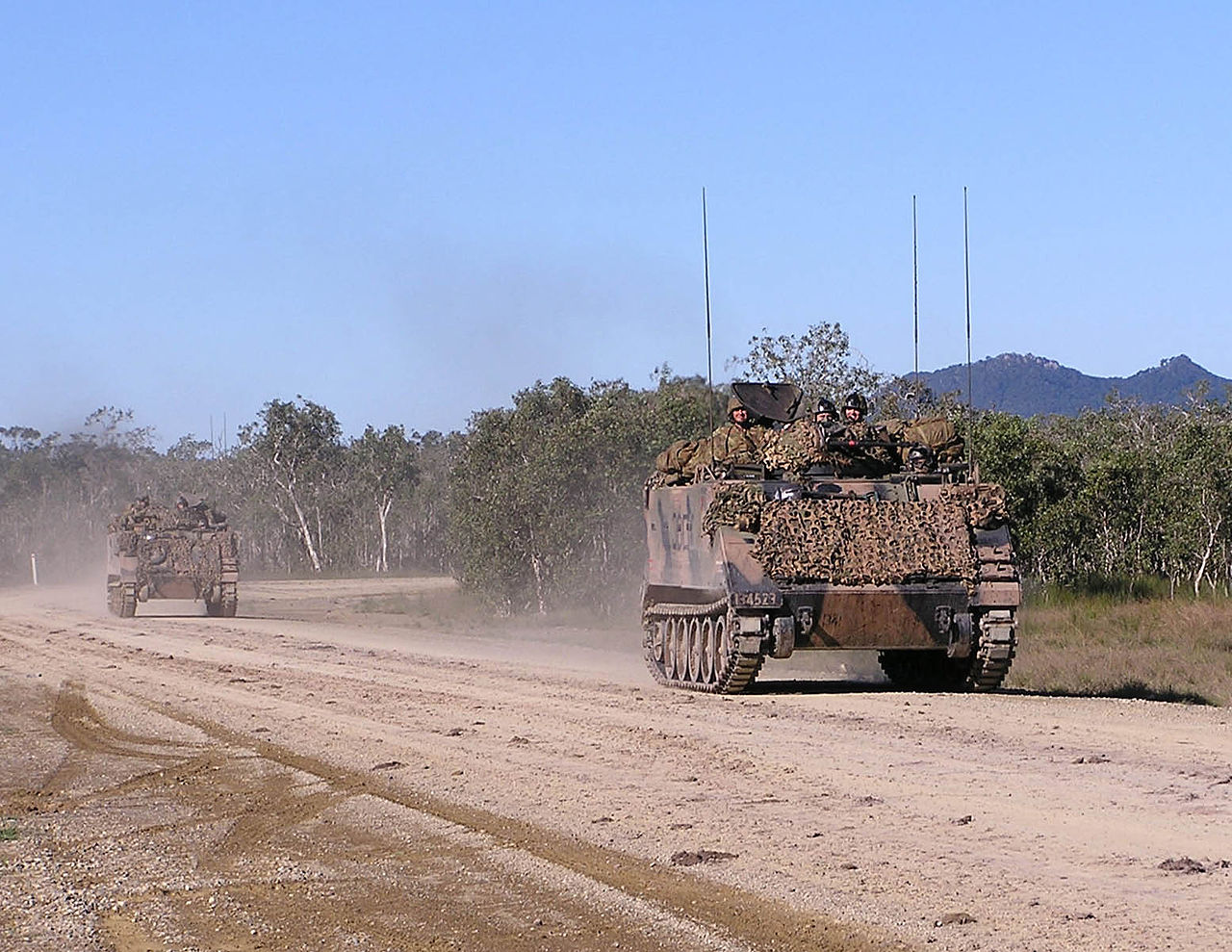
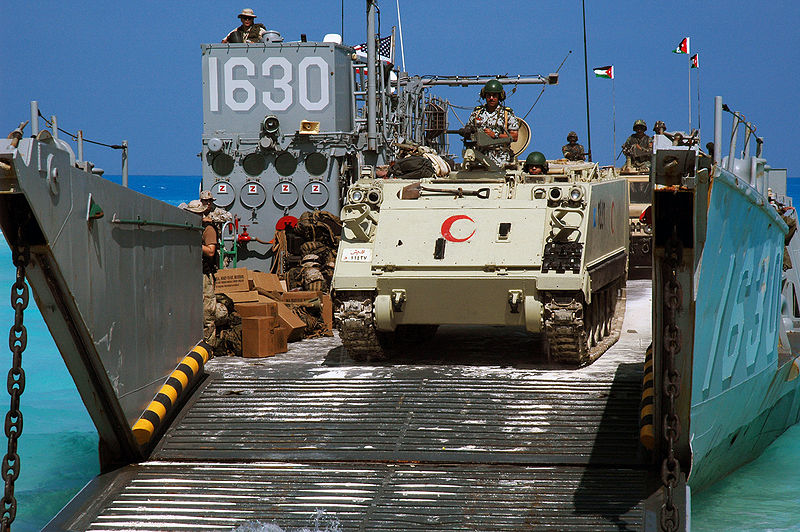
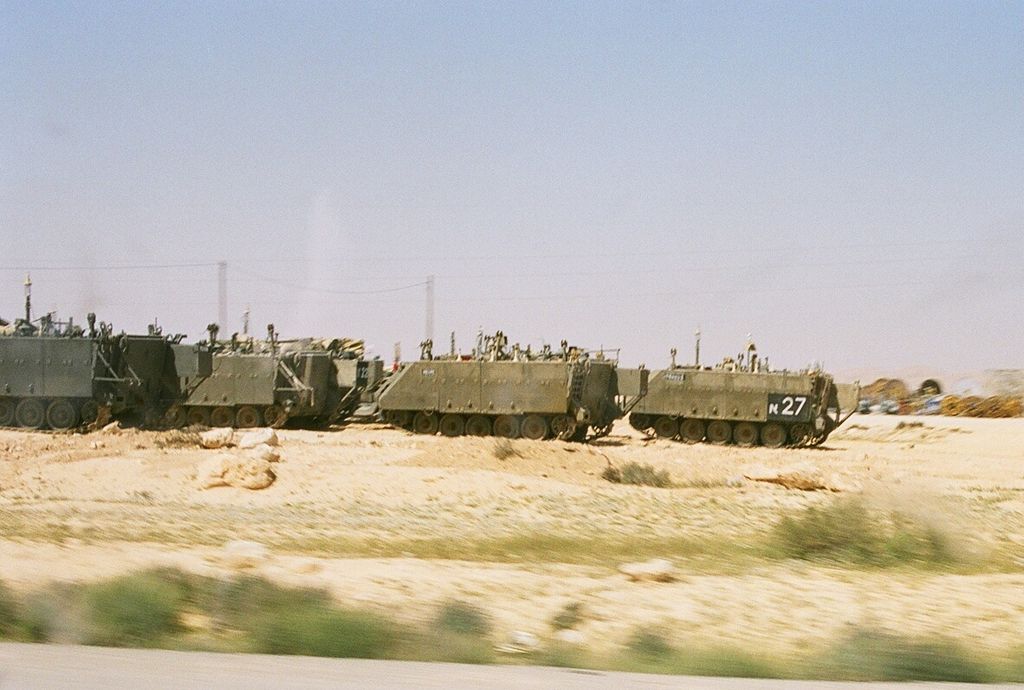
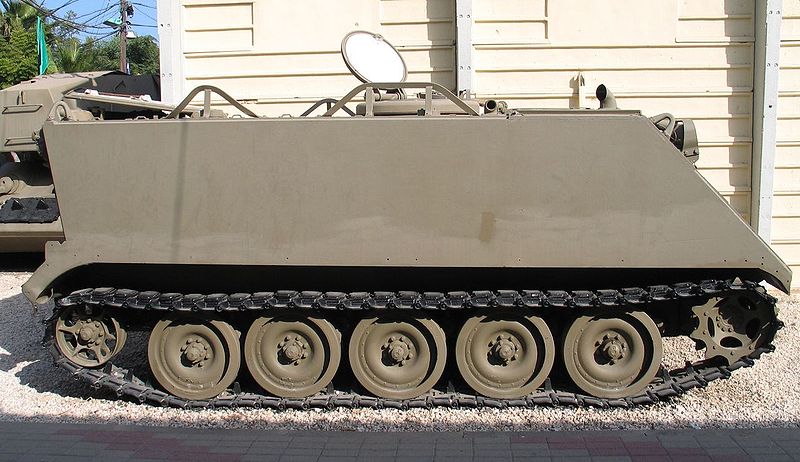
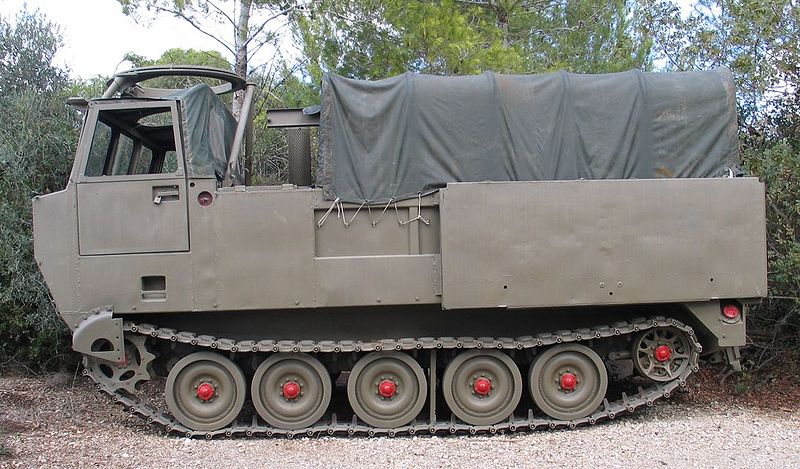
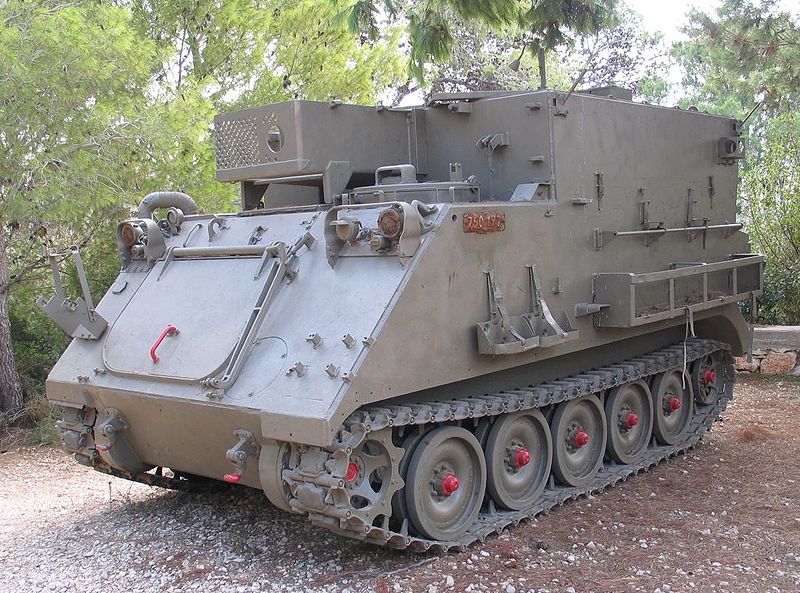
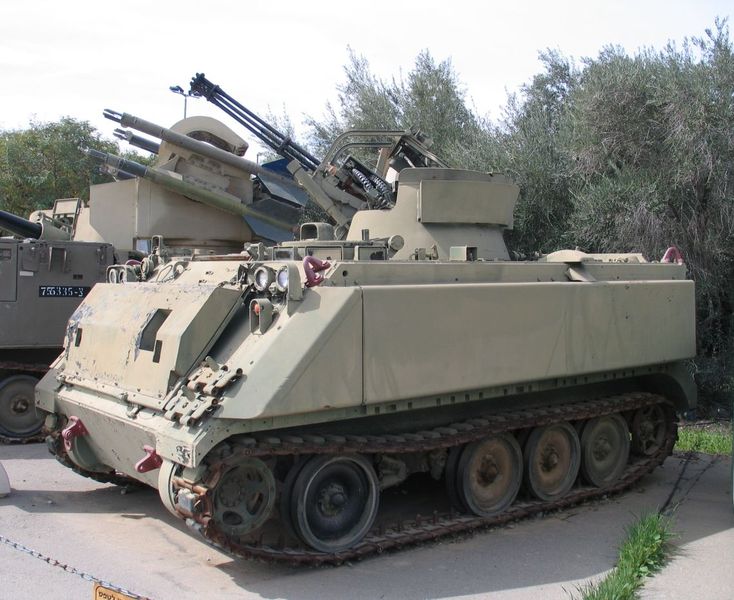
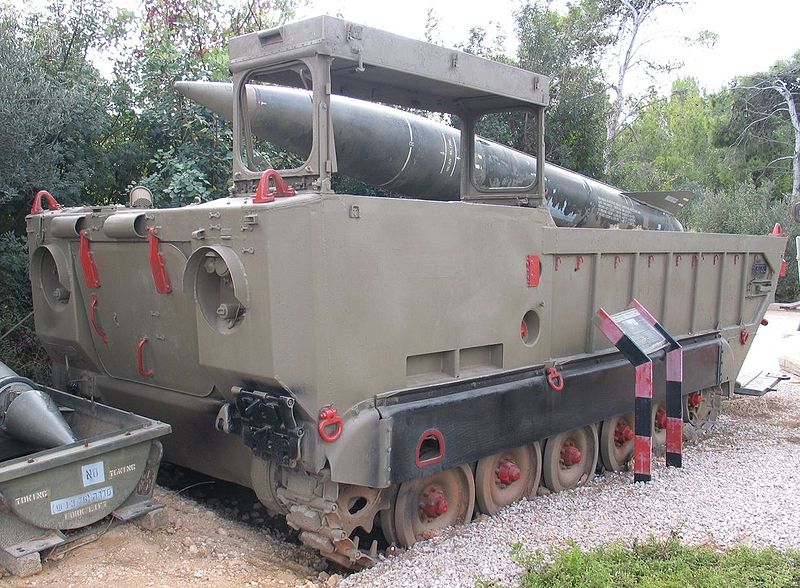
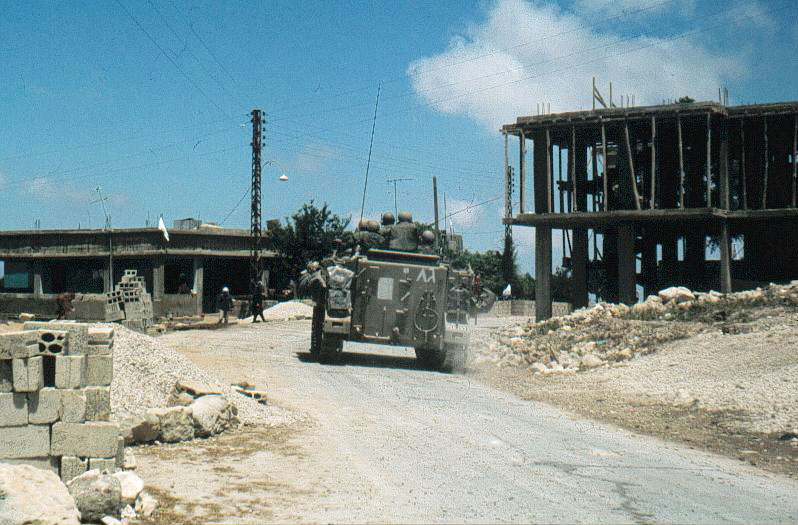
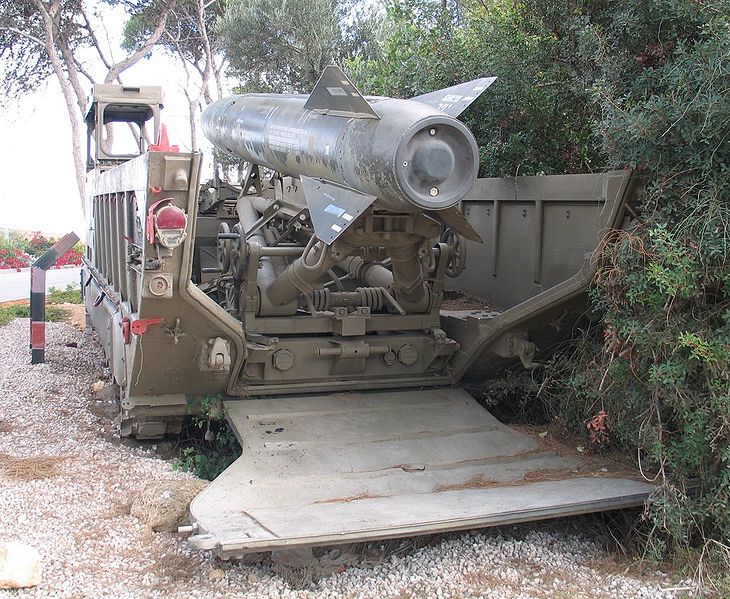
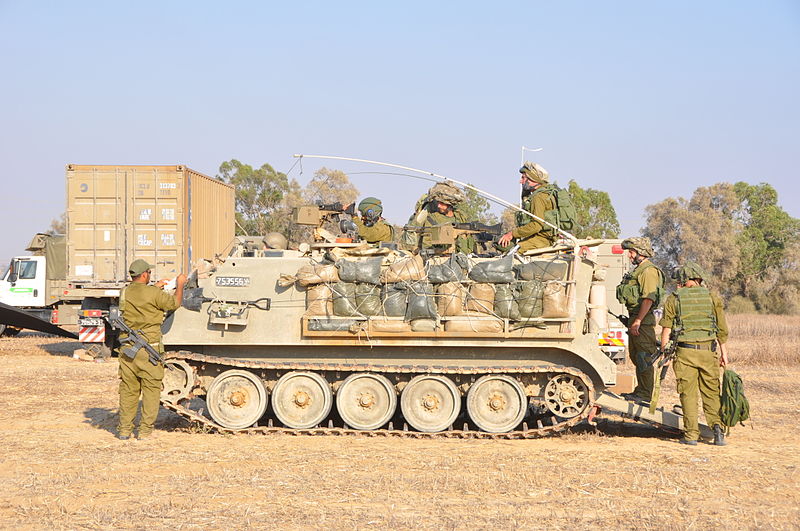
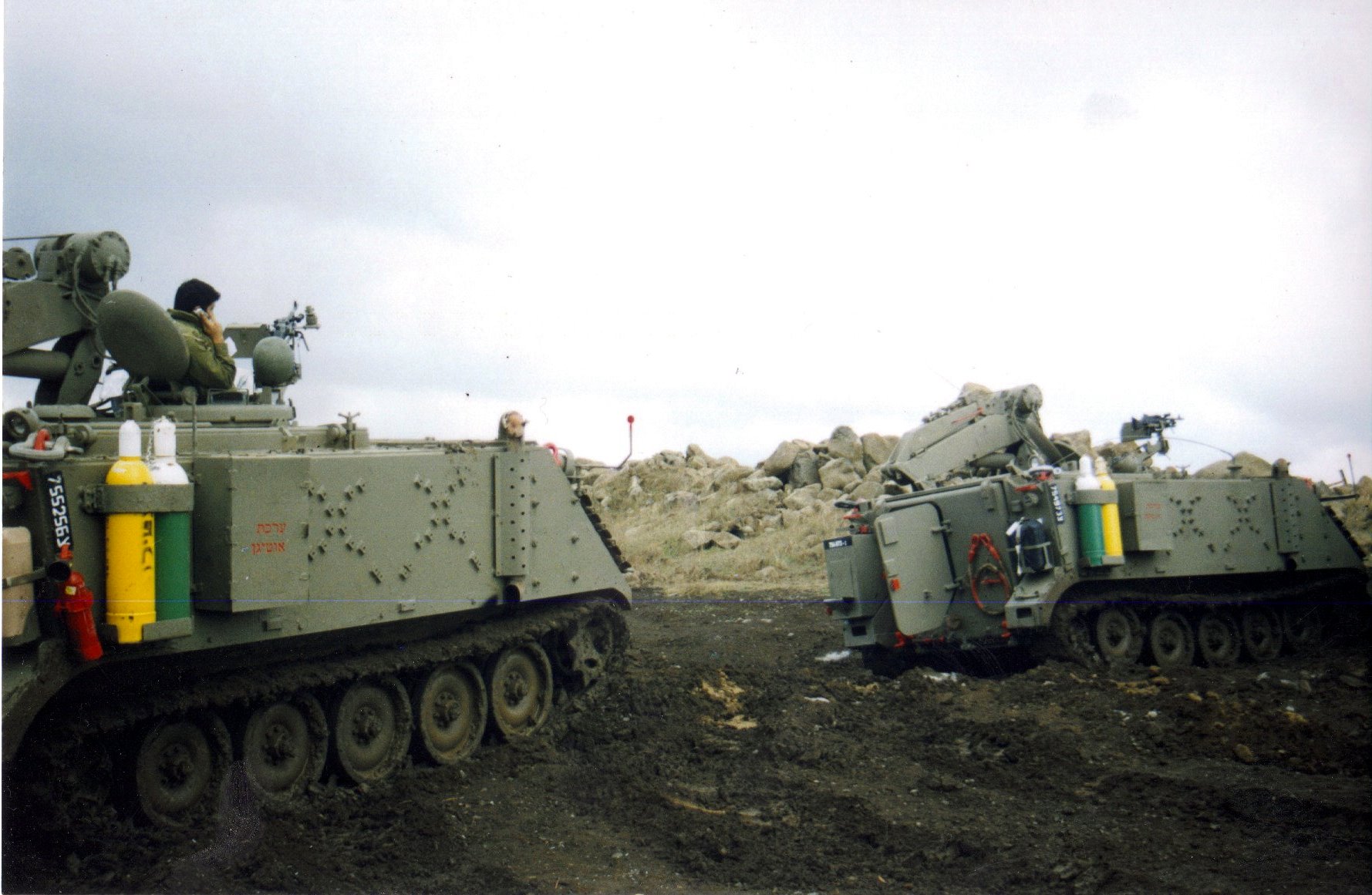
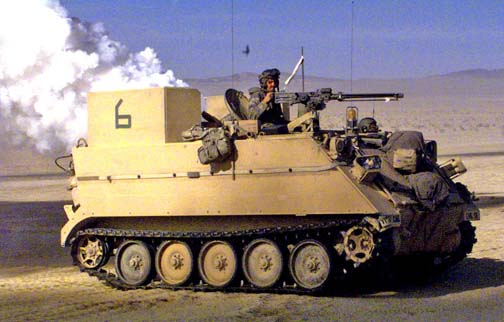
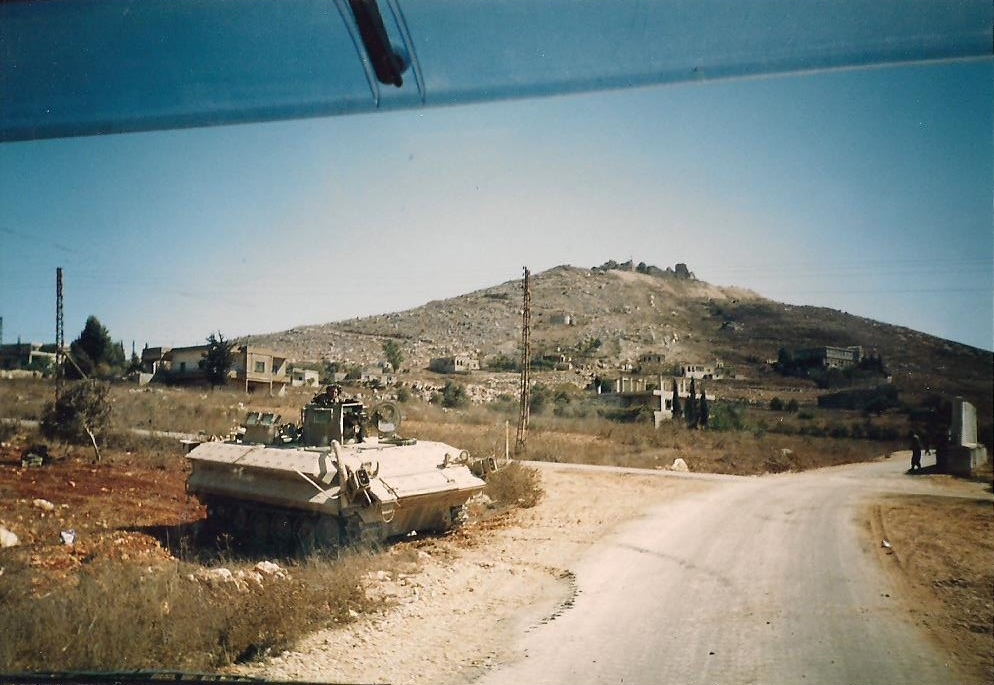
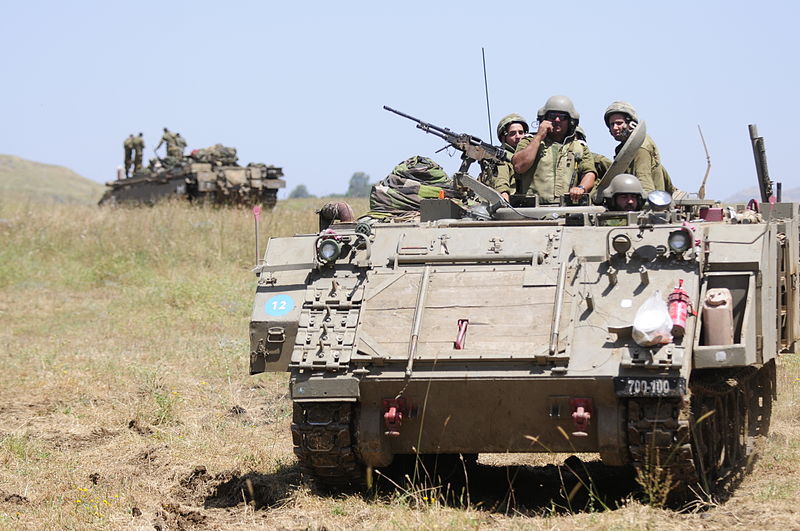
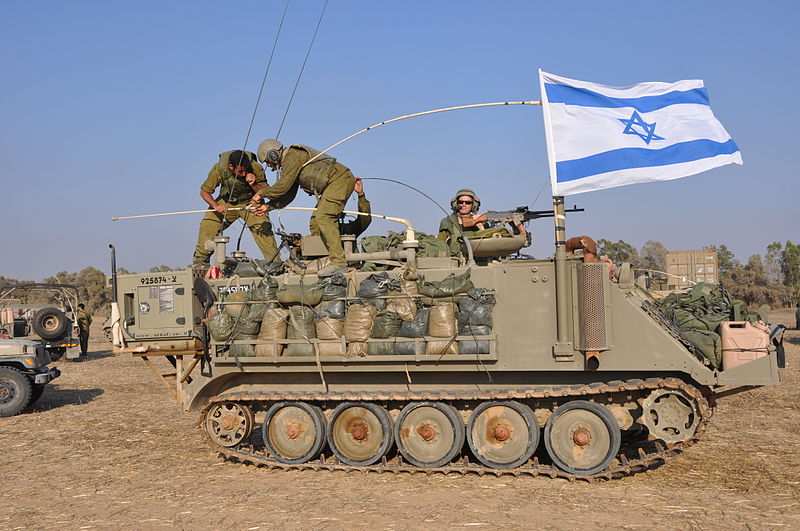
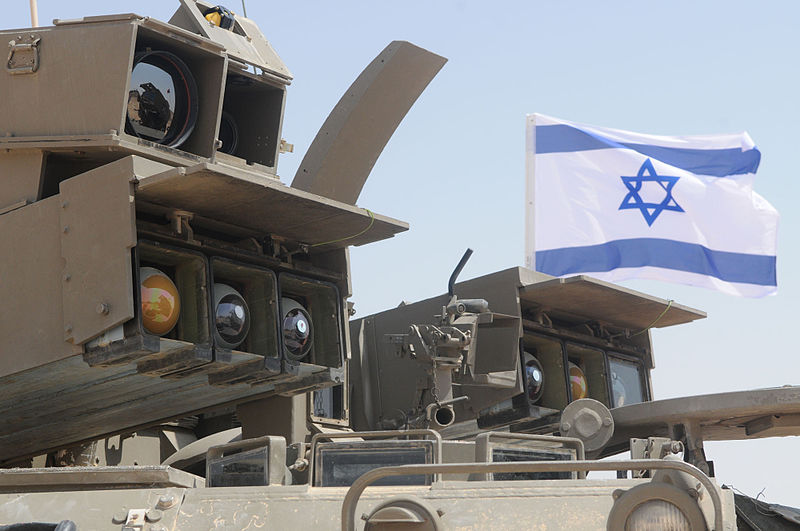
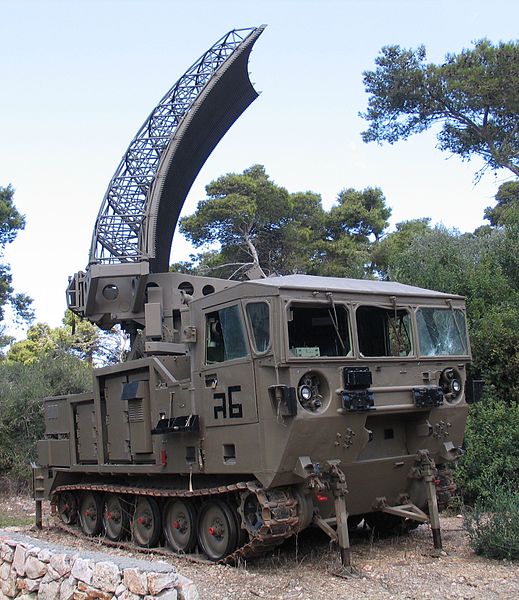
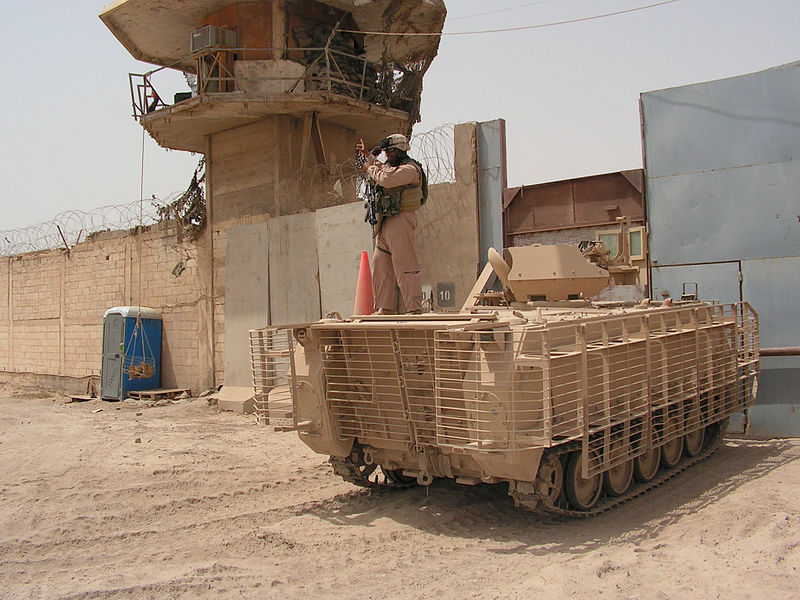
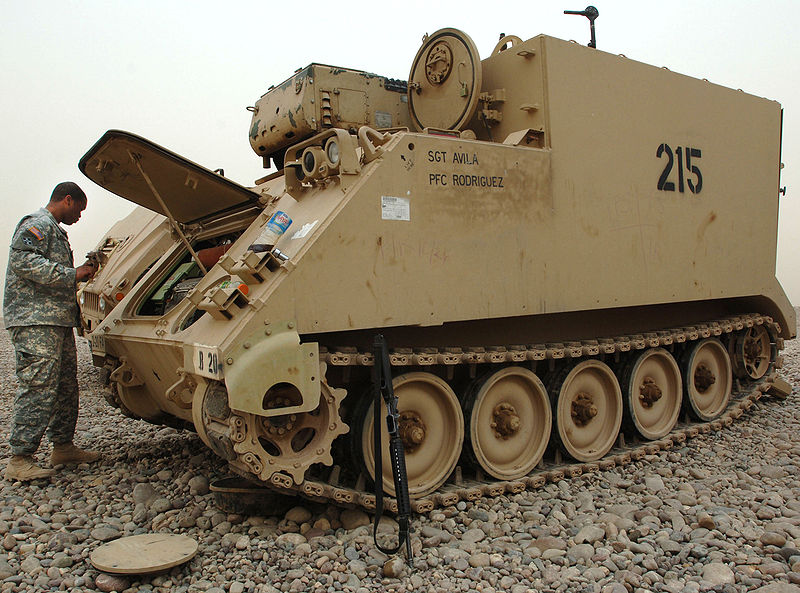
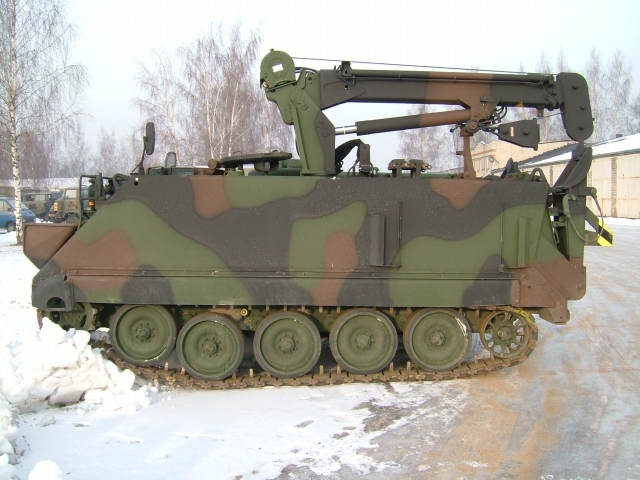
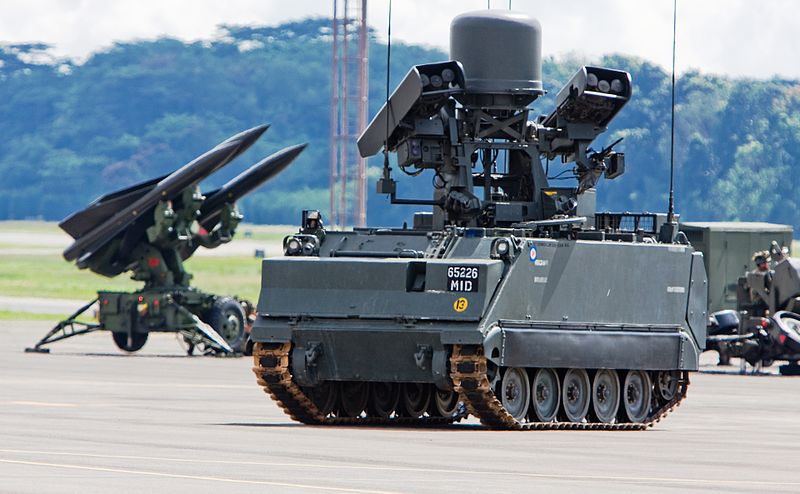
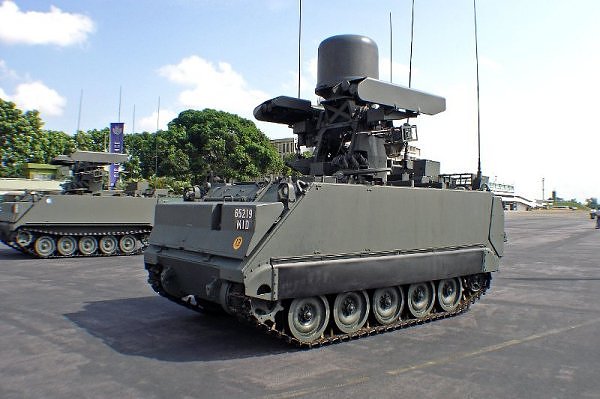
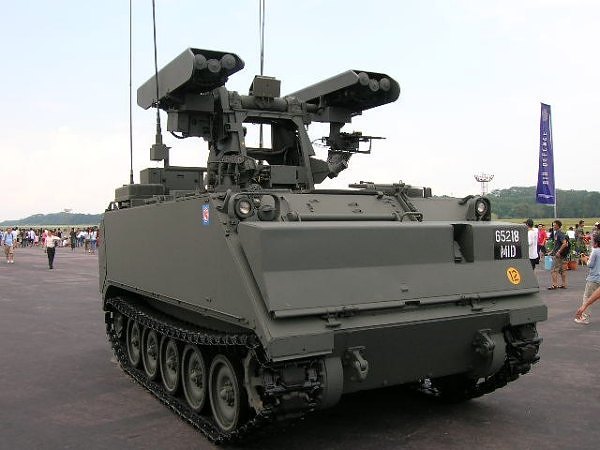
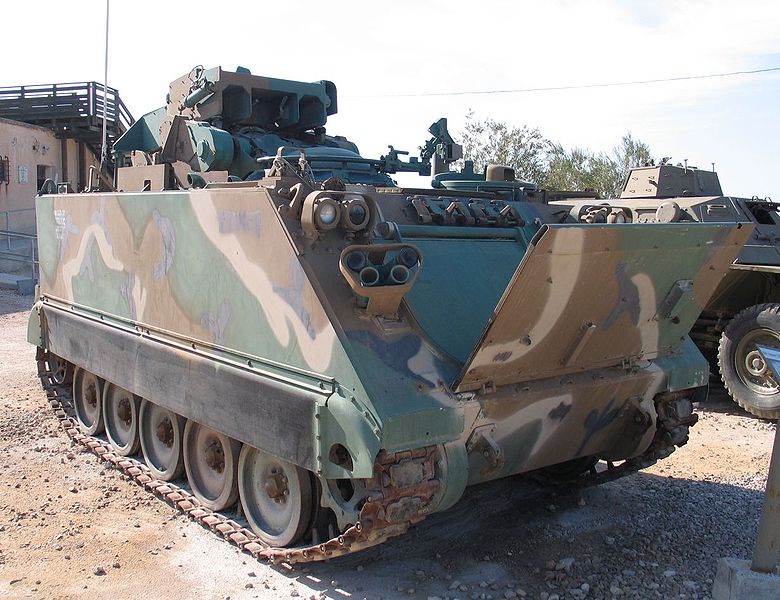
_GE-120mm_Moersertraeger.jpg)
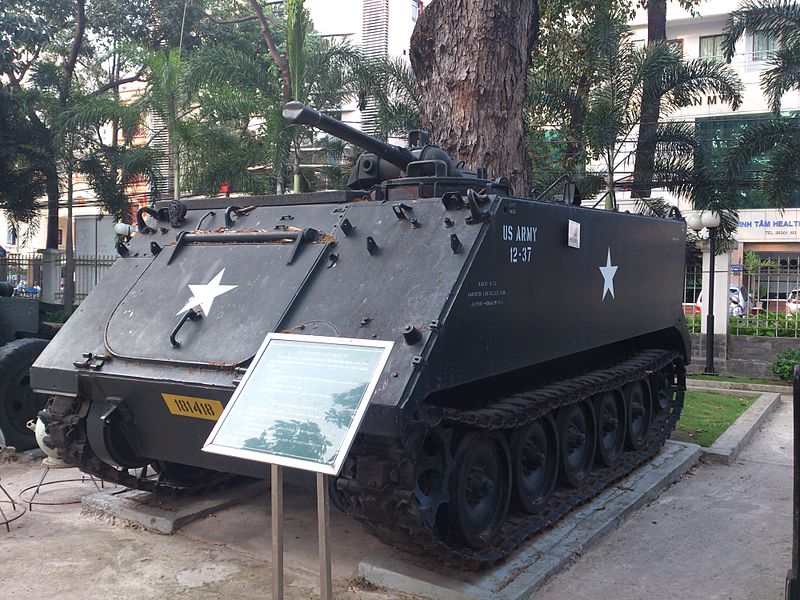
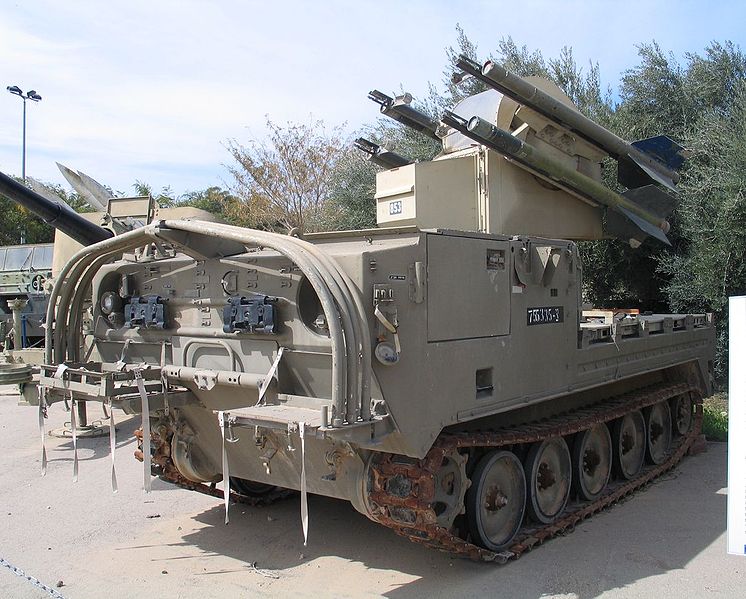
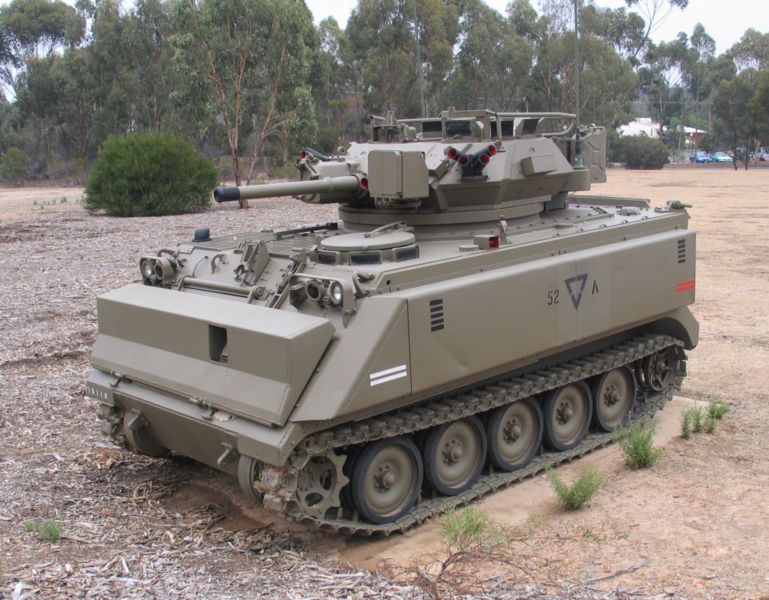
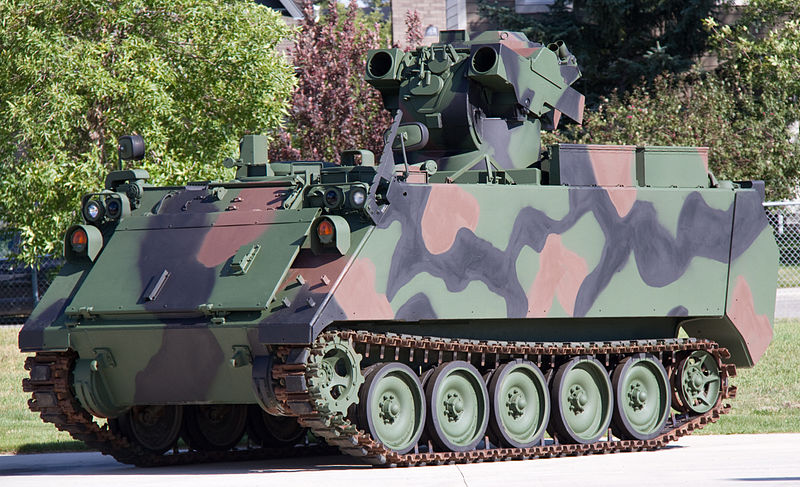
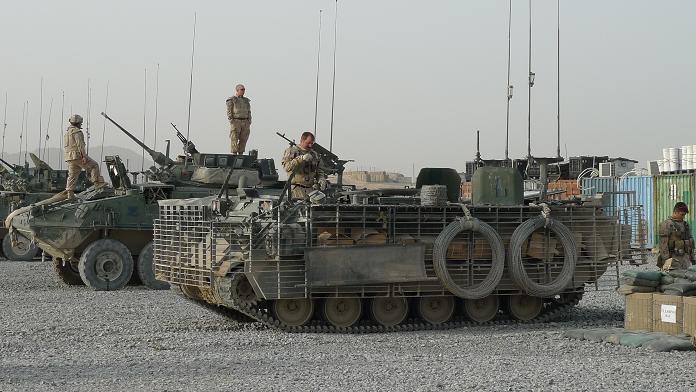
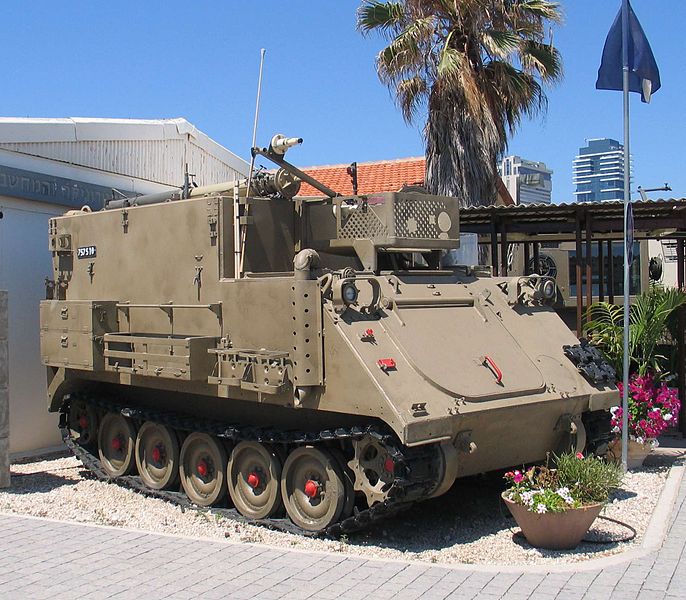
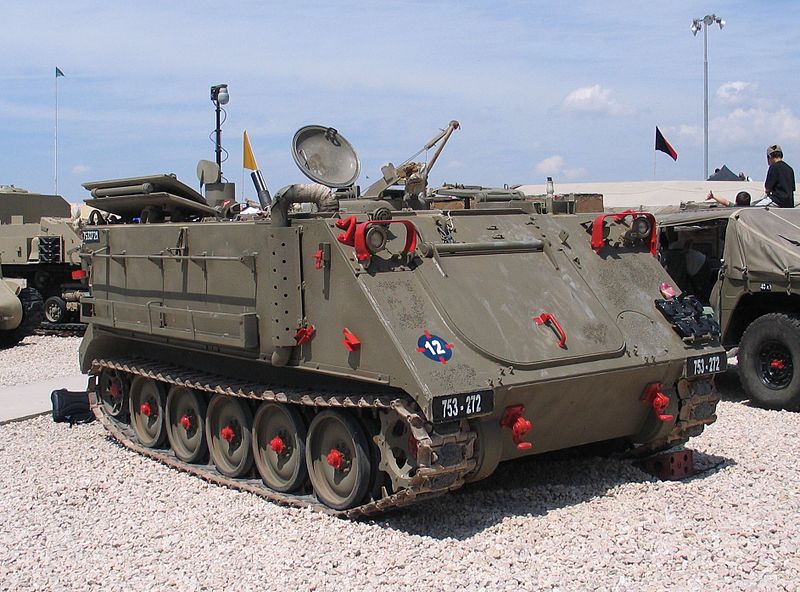
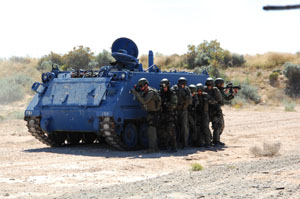
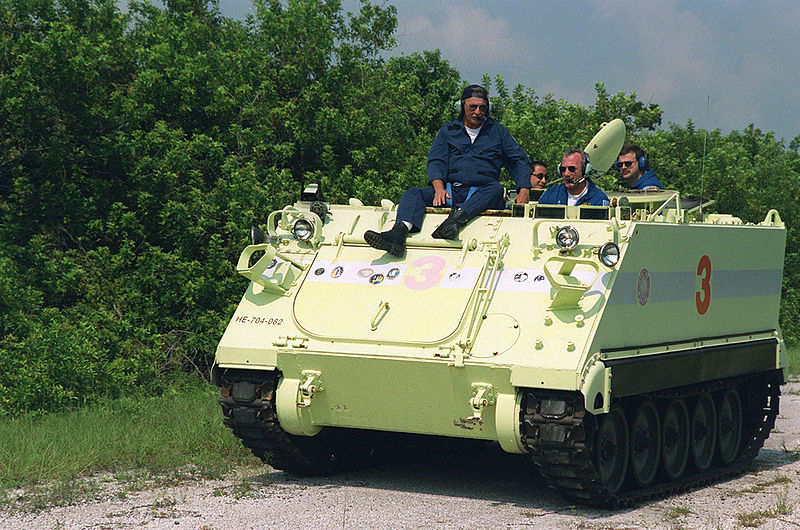

Cold War Tanks


































Cold war tanks posters

Cold War Main Battle Tanks

Cold War Soviet Army
Museums, Movies, Books & Games
The Tanks and Armor in pop culture
Tanks and armored vehicles in general are only really grasped when seen first person: The mass, the scale, it's all there. Explore also the way tanks were covered in the movie industry, in books and in video games.Movies:
Best tanks movie on warhistoryonline.com
On imdb.com
On bestsimilar.com/
miltours.com
liveabout.com/
watchmojo.com
Video Games:
pcgamesn.com
historyhit.com
levvvel.com
vg247.com/best-tank-games
mmobomb.com/
alienwarearena.com

